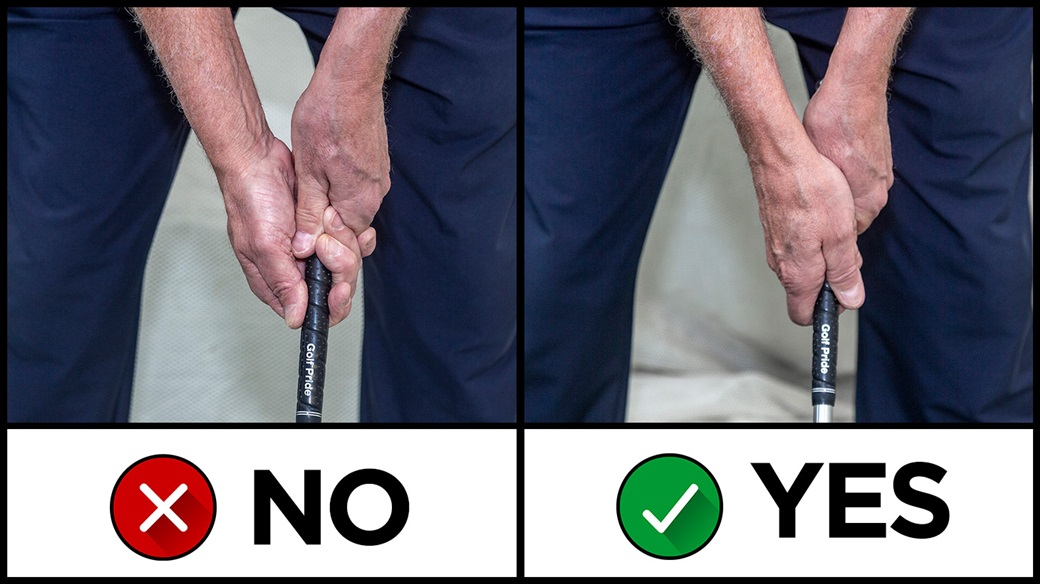
If you've been looking for more consistency in your golf game, you've probably been told that you have to start with sound fundamentals. They're the building blocks, the foundation upon which the whole golf swing is built. It can be confusing, though, because there's a lot of debate over which elements are fundamentals and which are simply preferences. So let's start first with the definition of the word:
fundamental (noun)
[ fuhn-duh-men-tl ] def: a basic principle, rule, law, or the like, that serves as the groundwork of a system; essential part.*
By definition then, a golf fundamental is essential, something you can't do without. If you don't have a secure grip on the handle, for example, it's going to be difficult to move and control the club. If you don't set up to the ball in a way that allows your body to move athletically, you can't expect to swing the club with much authority. And if you don't have a reliable way to aim the clubface, the ball isn't going to fly towards your target very often.
Pretty logical, but it's also very easy to get misled by the exceptions to the rule. We see the club champion who plays every shot off of his back foot, or the kid who can carry it 300 yards with a grip that looks like he's revving up a motorcycle throttle. We figure we can freelance, too, and ignore the tried and true basics. Usually it's not long before we find ourselves in trouble.
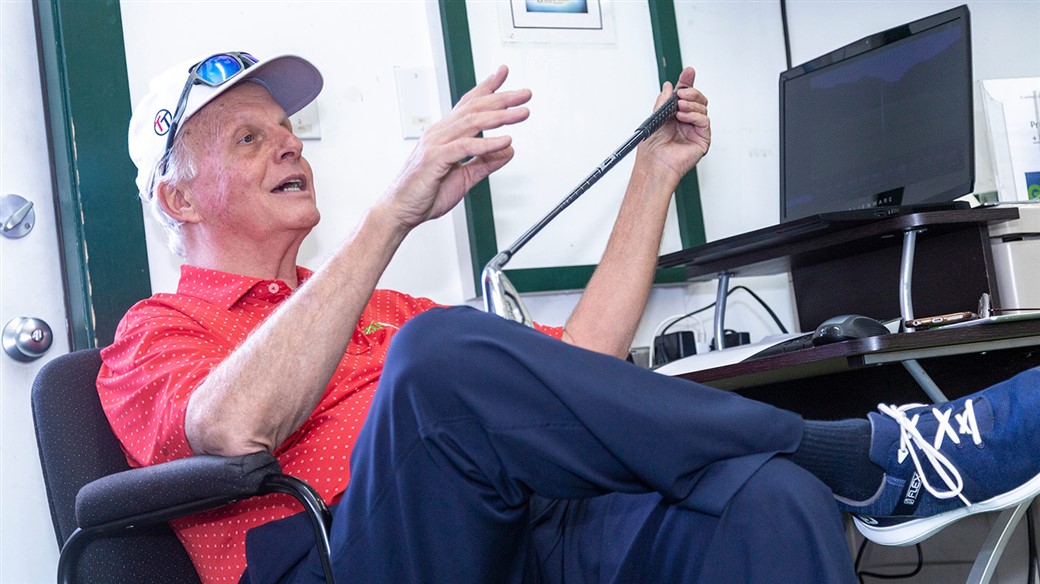
So what's the truth as it relates to golf fundamentals? For some expert advice we reached out to Skip Guss, a decorated teacher who played on the PGA Tour and worked alongside legends like Bob Toski, Jack Grout and Sam Snead. Skip boiled it down very simply:
"Deviation leads to compensation."
Yes, you can learn to play with an unorthodox grip or stance. You can let your left elbow fly or chicken-wing. But it makes it harder. You're introducing additional moving parts to a machine that's already complicated enough. Your best bet according to Skip? Start from square, start from neutral, with the simplest motion possible. As Skip says:
"Simple is efficient and efficient is repeatable. Repeatable is just another word for consistent."
And he added one important insight - golf is not like riding a bike. Over time, we all deviate. We all fall into bad habits. This is why players on tour are so reliant on alignment sticks - they're constantly monitoring their alignment and aim fundamentals to make sure they're not drifting too far from square and neutral. You need to stay on top of the building blocks in your game, too.
To help reinforce proper fundamentals, scroll through the following Do's and Don'ts from Skip on grip, posture and alignment. Devoting some time to these basics in the off-season will pay some big dividends this spring.
We hope you enjoy these tips. For more great content and to learn more about Skip's teaching, visit the GolfRite website.
Thanks, Skip!
• • •
Golf Grip Fundamentals
/teamtitleist/cfs-file/__key/telligent-evolution-components-attachments/13-1141-00-00-00-12-24-18/001-Skip-Guss-Grip-Do---Good-Grip-1460x821.jpg/teamtitleist/cfs-file/__key/telligent-evolution-components-attachments/13-1141-00-00-00-12-24-17/002-Skip-Guss-Grip-Do---Grip-Like-Throwing-1460x821.jpg/teamtitleist/cfs-file/__key/telligent-evolution-components-attachments/13-1141-00-00-00-12-24-16/003-Skip-Guss-Grip-Dont---Grip-Strong-1460x821.jpg/teamtitleist/cfs-file/__key/telligent-evolution-components-attachments/13-1141-00-00-00-12-24-15/004-Skip-Guss-Grip-Dont---Grip-Weak-B-1460x821.jpg/teamtitleist/cfs-file/__key/telligent-evolution-components-attachments/13-1141-00-00-00-12-24-14/005-Skip-Guss-Grip-Do---Hands-Opposing-2-1460x821.jpg/teamtitleist/cfs-file/__key/telligent-evolution-components-attachments/13-1141-00-00-00-12-24-13/006-Skip-Guss-Grip-Do---Hands-Opposing-1-1460x821.jpg/teamtitleist/cfs-file/__key/telligent-evolution-components-attachments/13-1141-00-00-00-12-24-12/007-Skip-Guss-Grip-Do---Grip-Rite-Left-1460x821.jpg/teamtitleist/cfs-file/__key/telligent-evolution-components-attachments/13-1141-00-00-00-12-24-11/008-Skip-Guss-Grip-Do---Grip-Rite-Both-1460x821.jpg/teamtitleist/cfs-file/__key/telligent-evolution-components-attachments/13-1141-00-00-00-12-24-10/009-Skip-Guss-Grip-Do---Grip-Rite-Hinge-1460x821.jpg
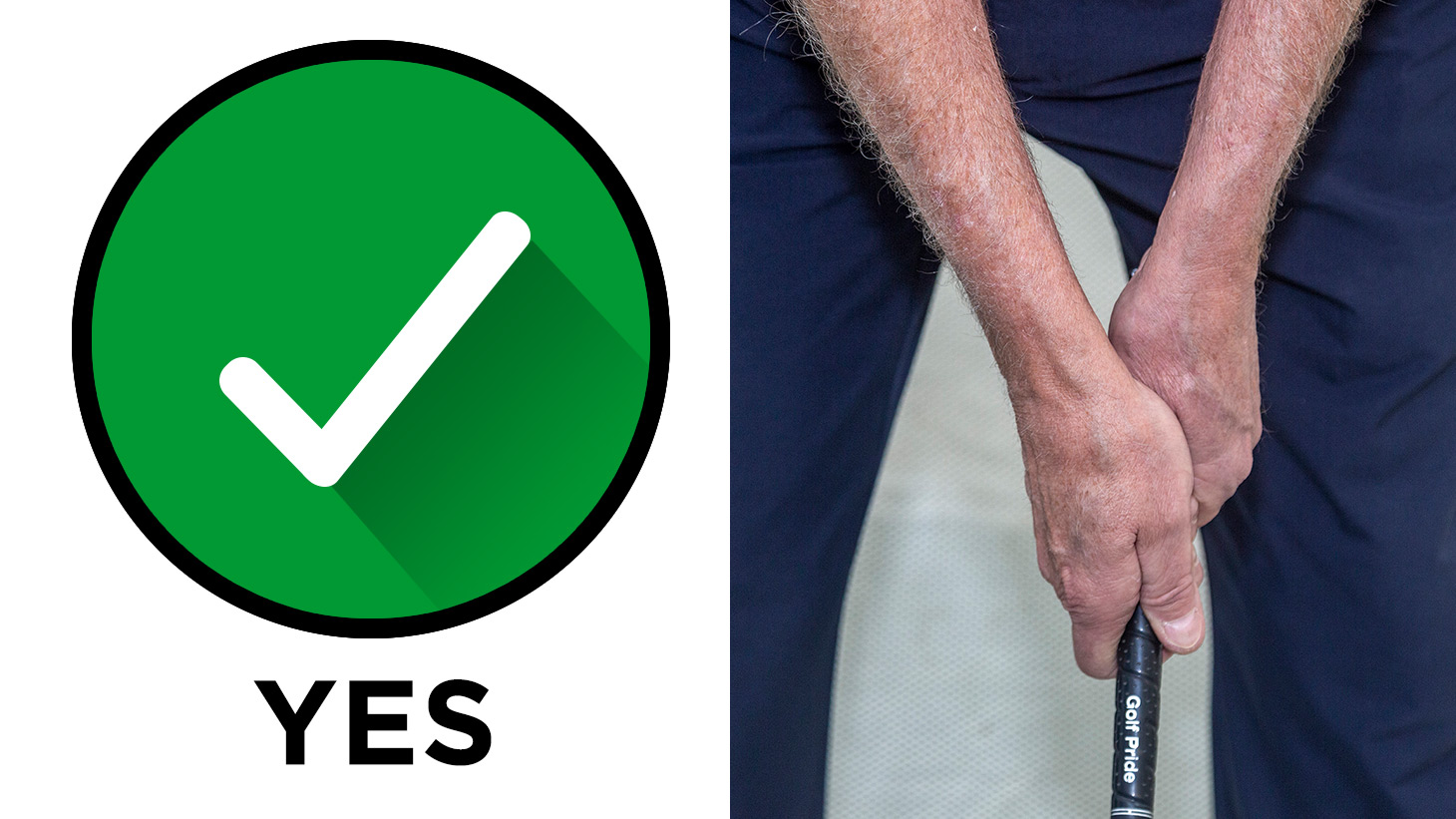 In a sound grip, the palms are opposing one another, you hold the handle in the fingers of your hands and (for a right-handed golfer) the back of the left hand and palm of the right hand are aligned with the clubface.1/9
In a sound grip, the palms are opposing one another, you hold the handle in the fingers of your hands and (for a right-handed golfer) the back of the left hand and palm of the right hand are aligned with the clubface.1/9
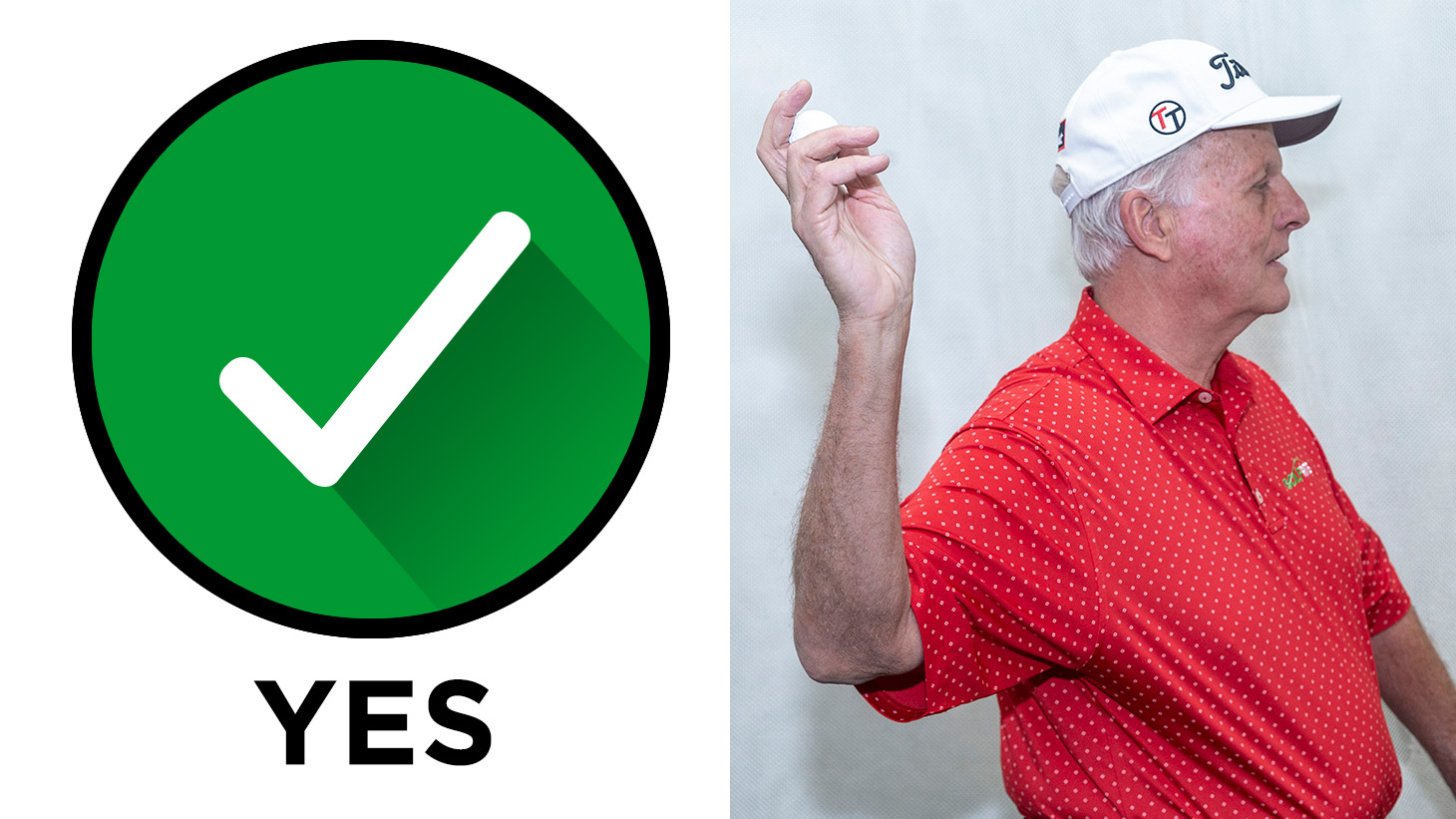 Just like throwing a ball for distance, everything's done at the fingers. Touch is in the fingers, distance is in the fingers, you've got to hold the club with the fingers.2/9
Just like throwing a ball for distance, everything's done at the fingers. Touch is in the fingers, distance is in the fingers, you've got to hold the club with the fingers.2/9
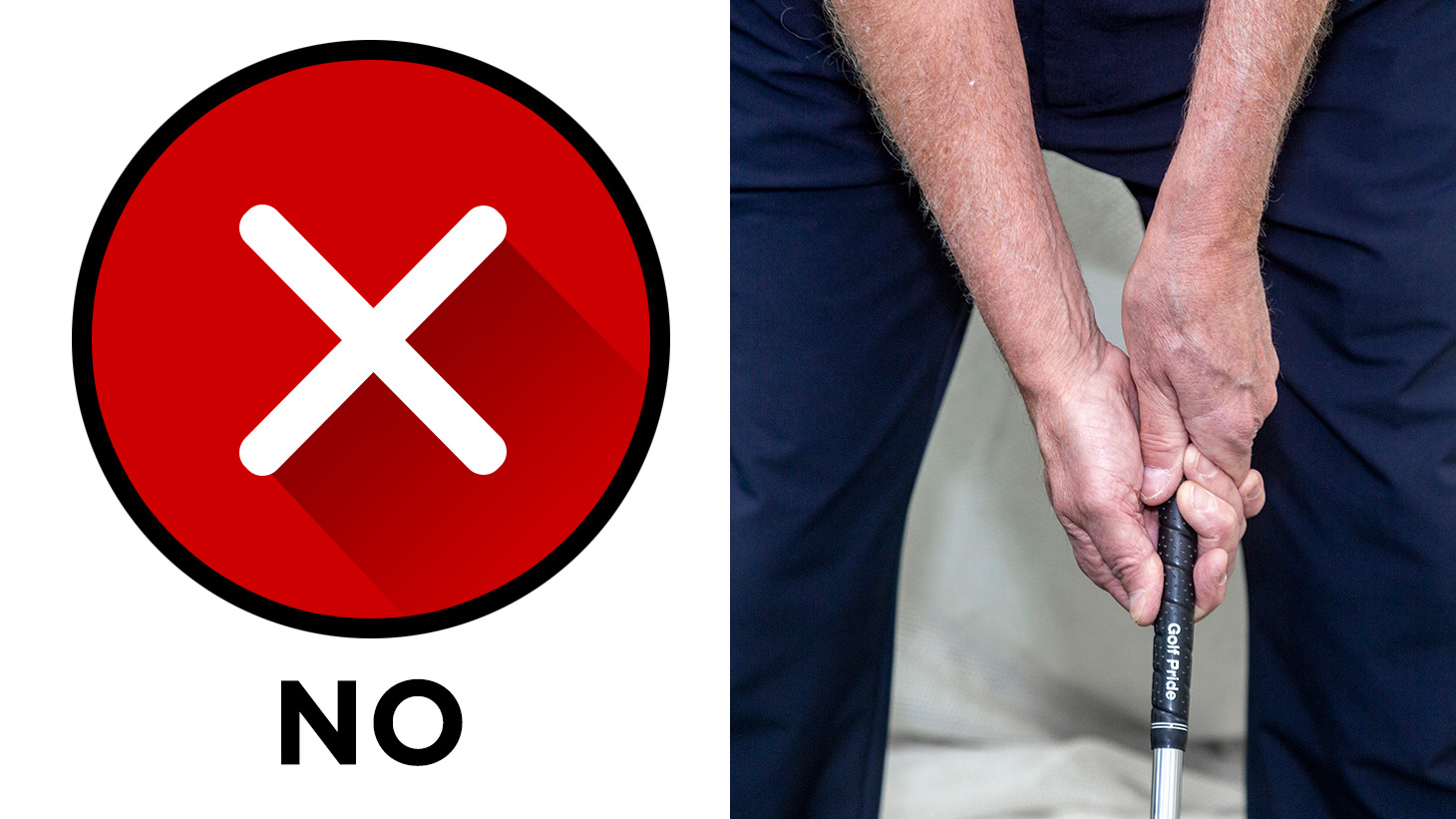 If your grip is too strong (above), a natural motion for a right-handed golfer (where the back of your left hand is square to the target at impact) would return the clubface closed, pointing way left of the target. To get the clubface square, you have to make some difficult compensations which could include - forcibly holding the clubface off, swinging way inside to out and sliding laterally - to name a few.3/9
If your grip is too strong (above), a natural motion for a right-handed golfer (where the back of your left hand is square to the target at impact) would return the clubface closed, pointing way left of the target. To get the clubface square, you have to make some difficult compensations which could include - forcibly holding the clubface off, swinging way inside to out and sliding laterally - to name a few.3/9
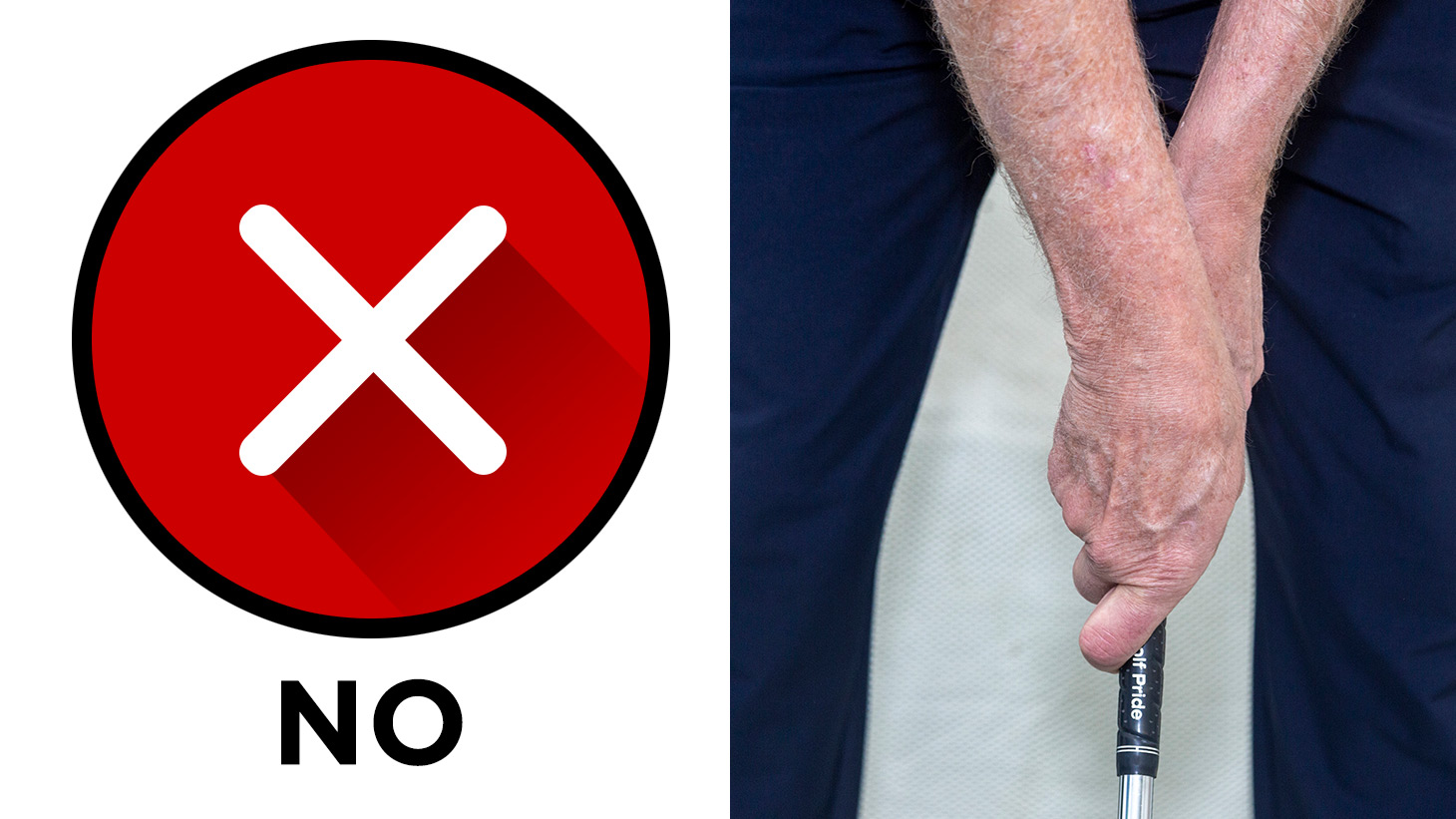 If your grip is too weak (above), a natural motion for a right-handed golfer (where the back of your left hand is square to the target at impact) would return the clubface open, pointing way right of the target. To get the clubface square, you have to make some difficult compensations which could include - forcibly flipping the toe of the clubface over, an outside-to-in swing path and standing up, losing your posture through impact - to name a few.4/9
If your grip is too weak (above), a natural motion for a right-handed golfer (where the back of your left hand is square to the target at impact) would return the clubface open, pointing way right of the target. To get the clubface square, you have to make some difficult compensations which could include - forcibly flipping the toe of the clubface over, an outside-to-in swing path and standing up, losing your posture through impact - to name a few.4/9
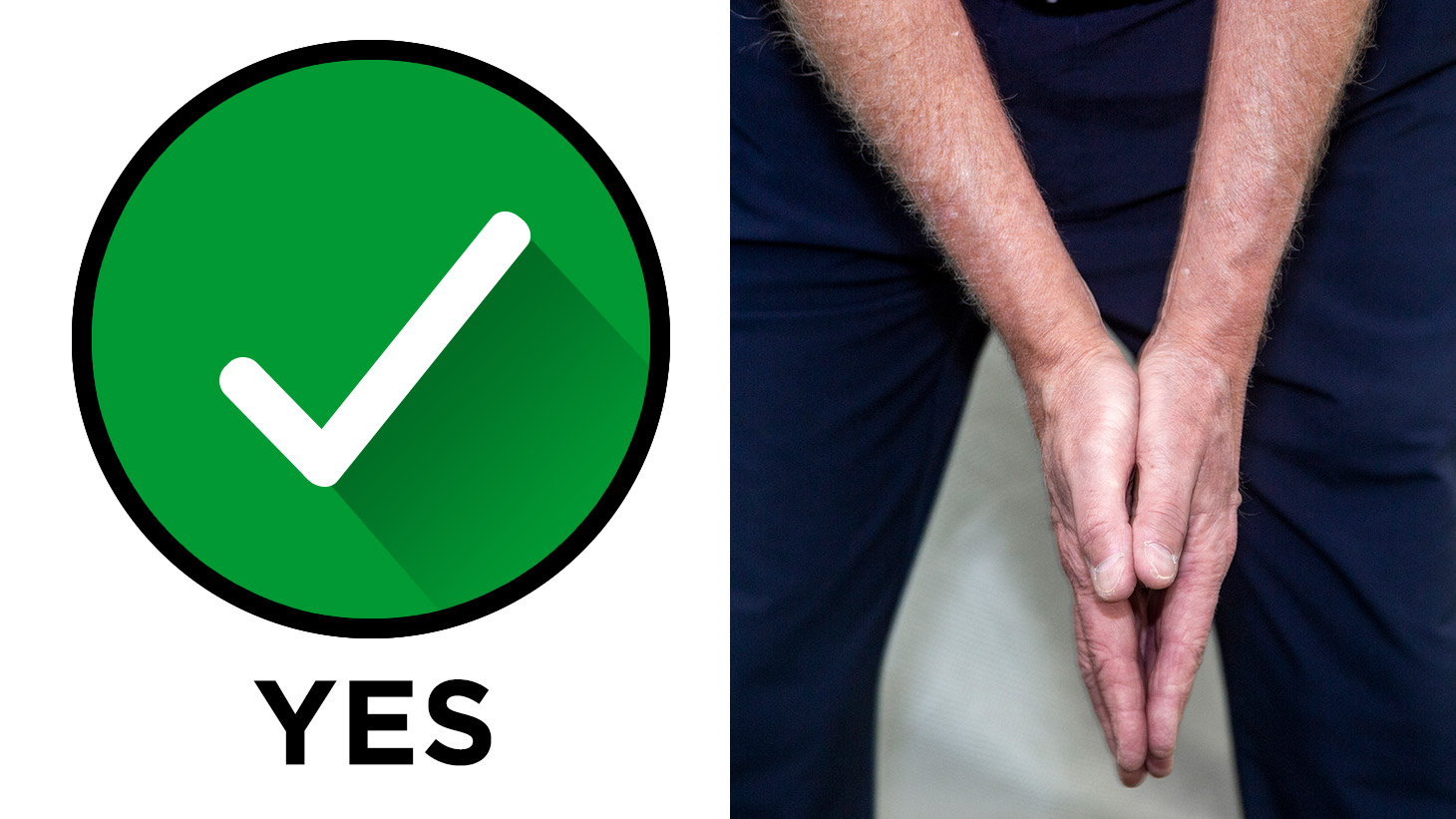 Generally, the hands work together best when the palms are opposing...5/9
Generally, the hands work together best when the palms are opposing...5/9
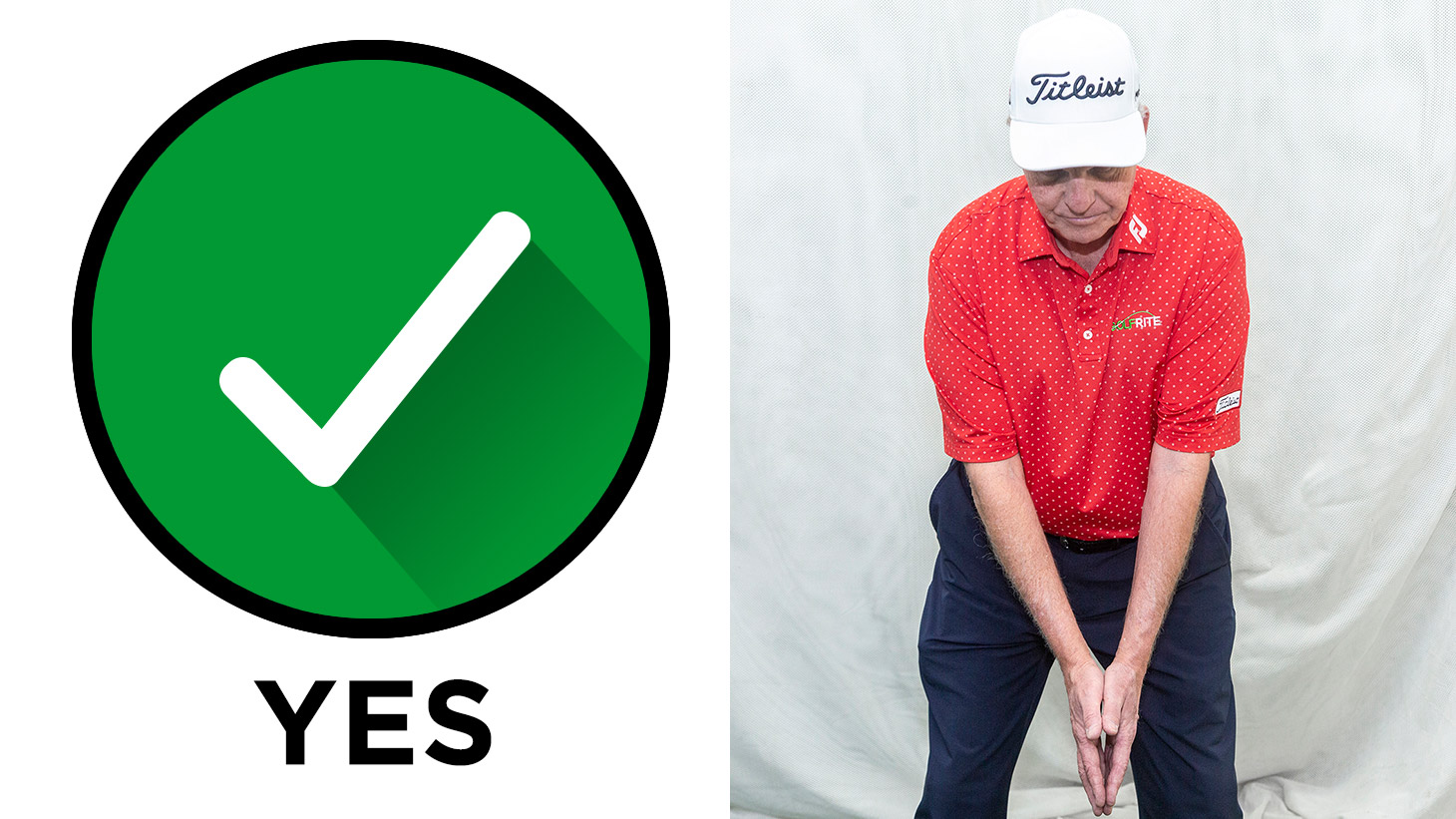 ...so that's how you want to orient your hands when you take your grip.6/9
...so that's how you want to orient your hands when you take your grip.6/9
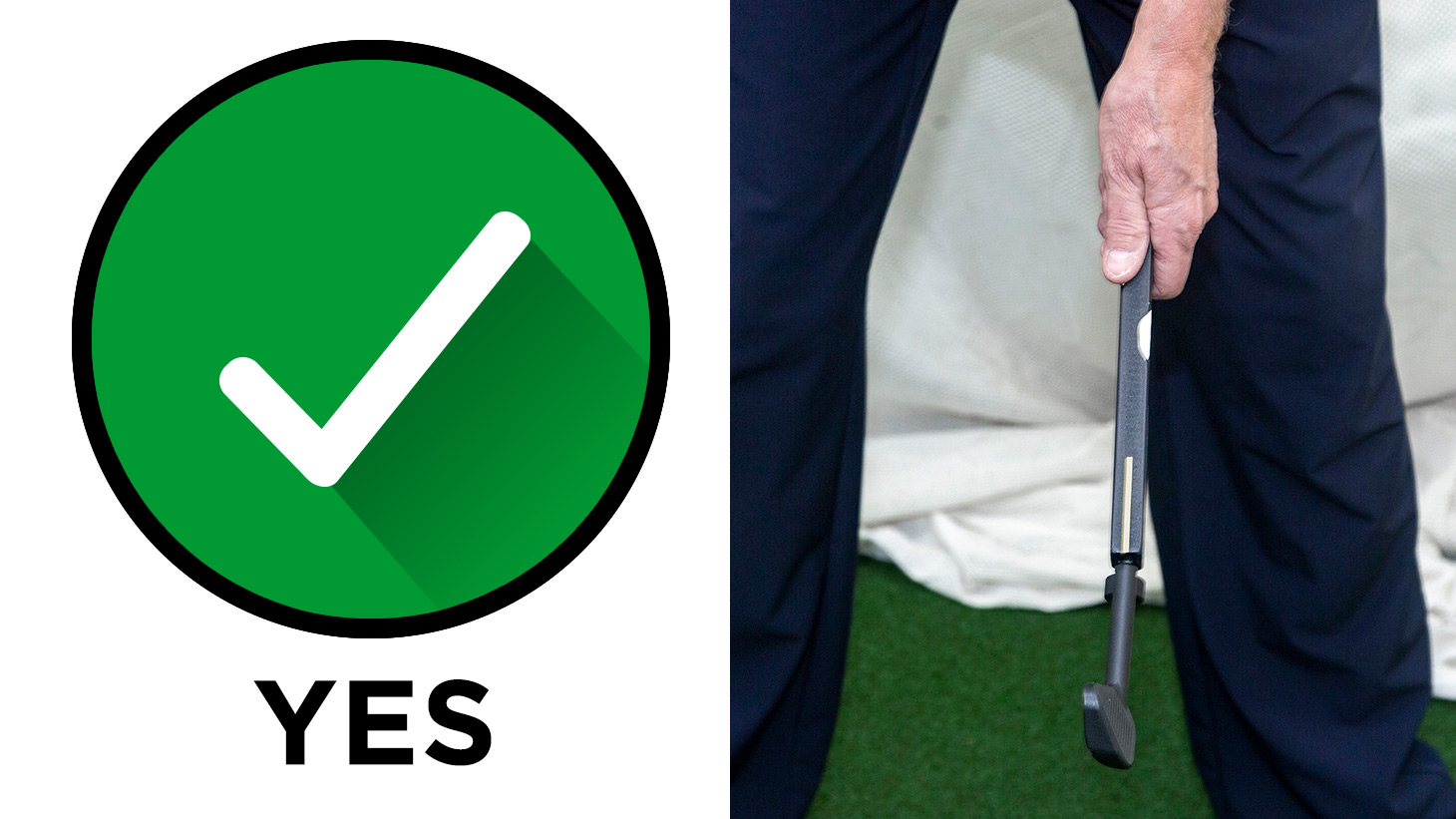 This training aid is a great way to practice a sound grip (you can use a piece of rectangular 1/2" x 3/4" wood molding, too). Start with your top hand (right hand for a left-handed golfer, left hand for a rightie like me). Grip the handle in the fingers. The thumb is snug against your forefinger and it rests on top of the handle, slightly right of center.7/9
This training aid is a great way to practice a sound grip (you can use a piece of rectangular 1/2" x 3/4" wood molding, too). Start with your top hand (right hand for a left-handed golfer, left hand for a rightie like me). Grip the handle in the fingers. The thumb is snug against your forefinger and it rests on top of the handle, slightly right of center.7/9
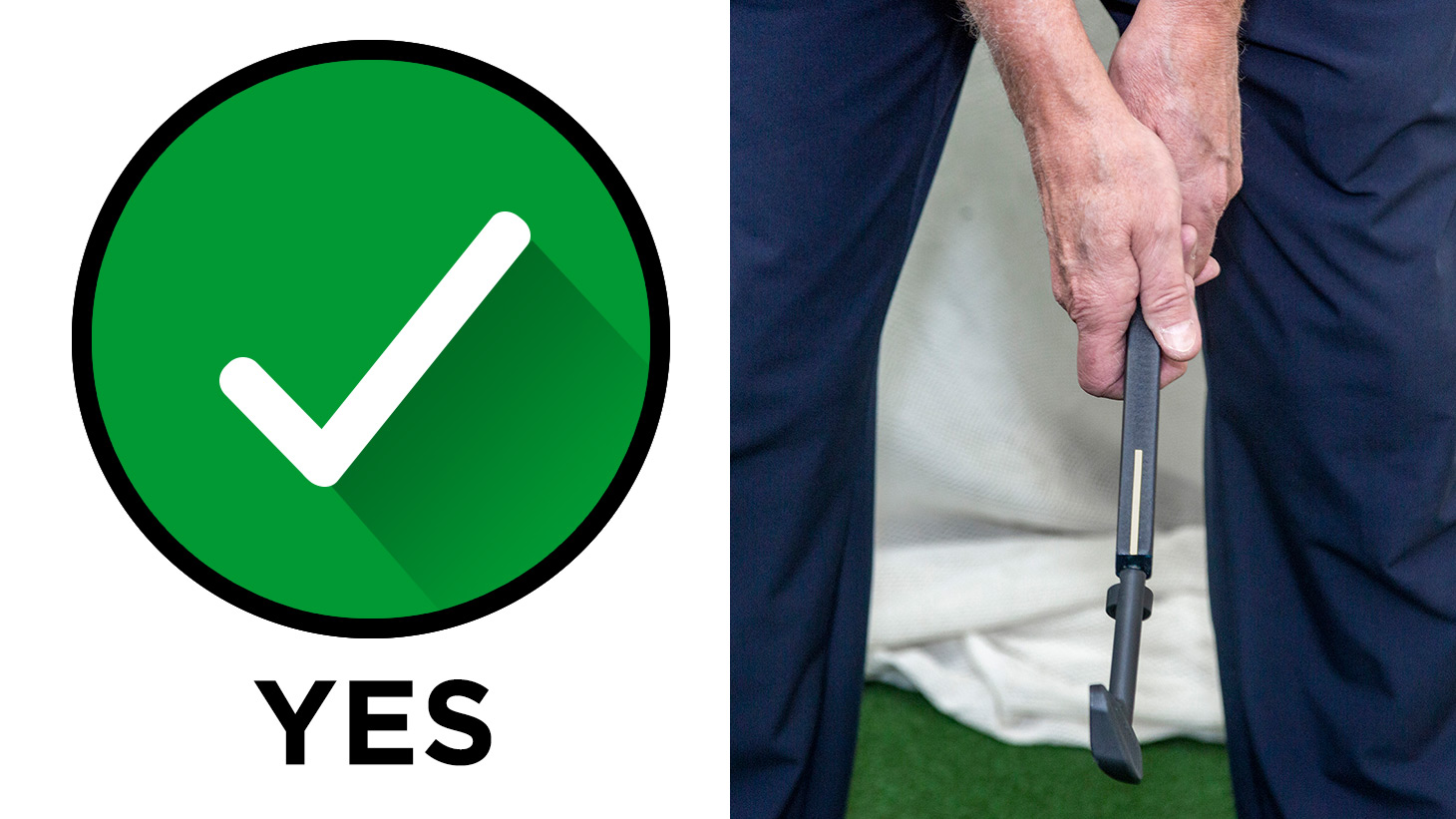 Now place your bottom hand on the handle in the same way. Slide your right hand up the handle until the ring finger of your right hand fits against the index finger of your left hand. Fold your right thumb over your left thumb. Your right thumb fits snugly against the forefinger of the right hand and it rests on top of the handle, slightly left of center. The right pinkie can overlap the index finger of your left hand or interlock. Experiment to find which is more comfortable for you.
8/9
Now place your bottom hand on the handle in the same way. Slide your right hand up the handle until the ring finger of your right hand fits against the index finger of your left hand. Fold your right thumb over your left thumb. Your right thumb fits snugly against the forefinger of the right hand and it rests on top of the handle, slightly left of center. The right pinkie can overlap the index finger of your left hand or interlock. Experiment to find which is more comfortable for you.
8/9
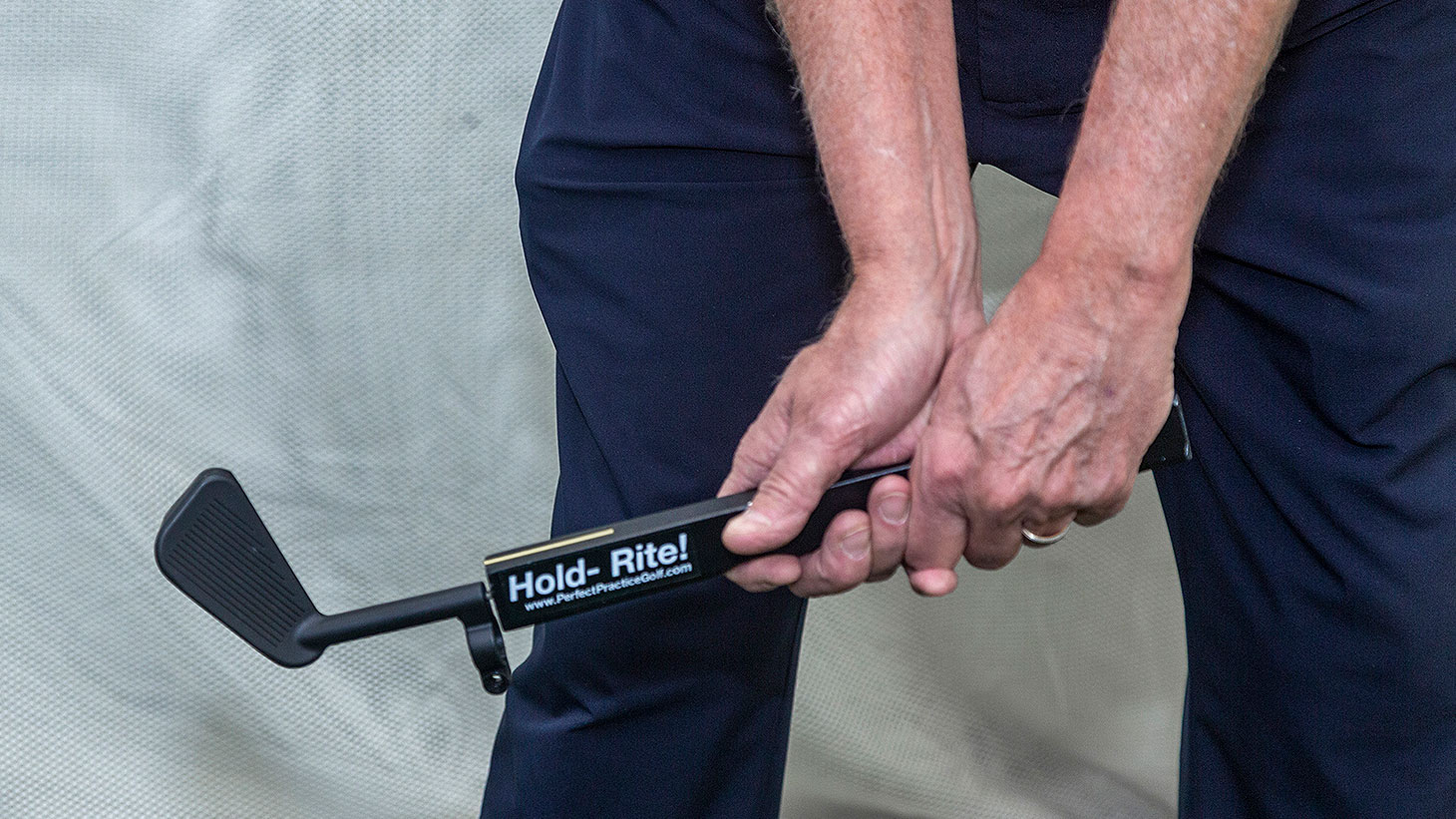 The rectangular shape of this aid ensures that your hands are aligned with the clubface. It also ingrains the feeling of your palms facing each other, which allows your wrists to hinge properly, a key lever for generating speed.9/9
The rectangular shape of this aid ensures that your hands are aligned with the clubface. It also ingrains the feeling of your palms facing each other, which allows your wrists to hinge properly, a key lever for generating speed.9/9
"Good players do very little with their hands. Poor players do too much. A good grip allows you to hold the club lightly, which allows your hands and wrists to be soft, which in turn allows the club to hinge, release and accelerate with tremendous speed through the ball. 'Release' means to let go. You can't release something if you have a death grip on it." - Skip
• • •
Golf Posture Fundamentals
/teamtitleist/cfs-file/__key/telligent-evolution-components-attachments/13-1142-00-00-00-12-24-00/001-Skip-Guss-Posture-Do---Athletic-Posture-1460x821.jpg/teamtitleist/cfs-file/__key/telligent-evolution-components-attachments/13-1142-00-00-00-12-23-99/002-Skip-Guss-Posture-Dont---Slouched-Posture-B-1460x821.jpg/teamtitleist/cfs-file/__key/telligent-evolution-components-attachments/13-1142-00-00-00-12-23-98/003-Skip-Guss-Posture-Dont---Upright-Posture-1460x821.jpg
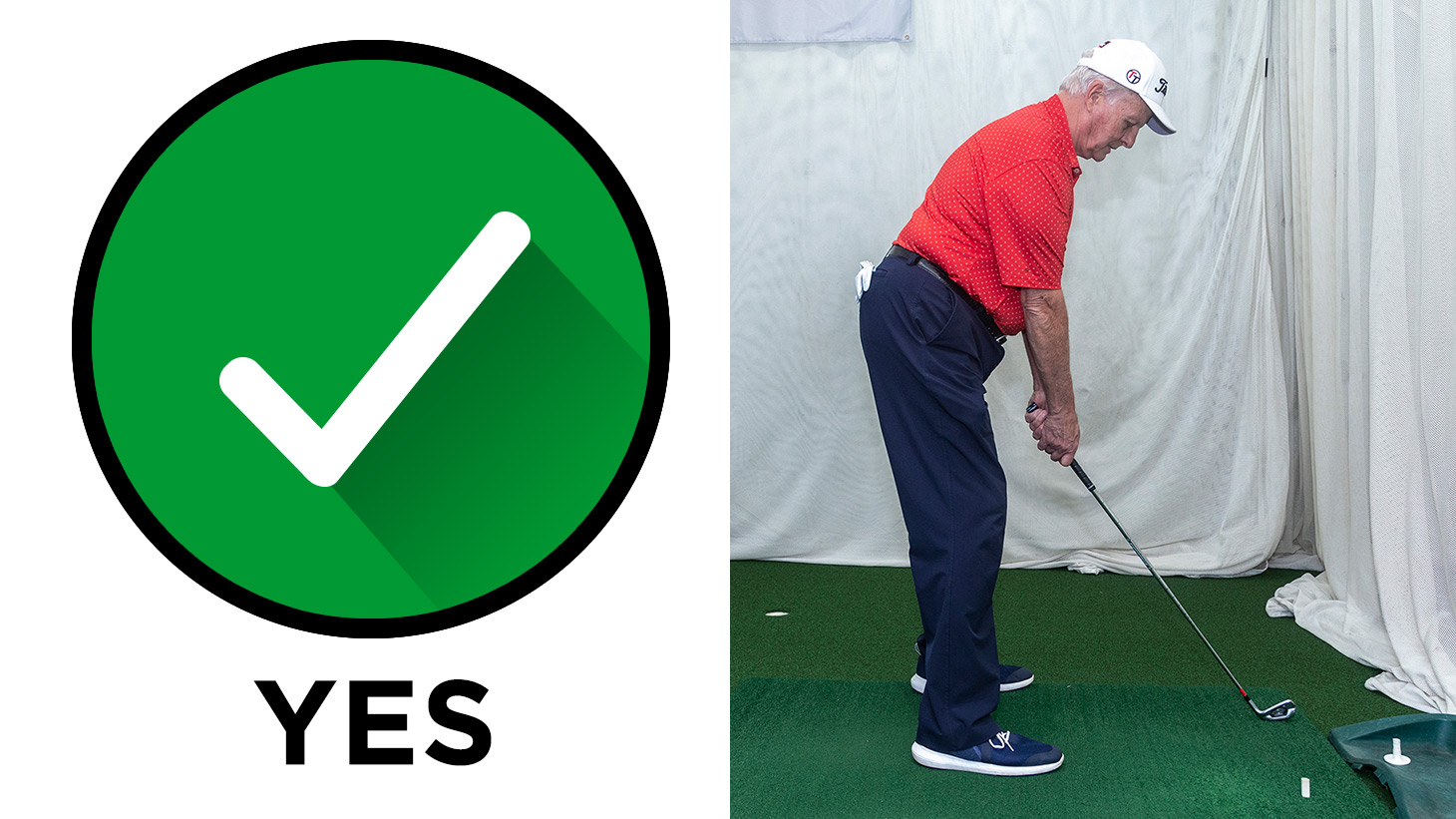 In good posture, your back is fairly straight, but not stiff. Feel tall. Your arms should hang loosely from your shoulder joints and you should feel your weight distributed evenly between your heels and the balls of your feet. Your knees should feel alive - I like to use the word “springy”. This posture allows you to use your big muscles, turn your body around your spine, use the ground for leverage and take advantage of centrifugal force to accelerate the club.1/3
In good posture, your back is fairly straight, but not stiff. Feel tall. Your arms should hang loosely from your shoulder joints and you should feel your weight distributed evenly between your heels and the balls of your feet. Your knees should feel alive - I like to use the word “springy”. This posture allows you to use your big muscles, turn your body around your spine, use the ground for leverage and take advantage of centrifugal force to accelerate the club.1/3
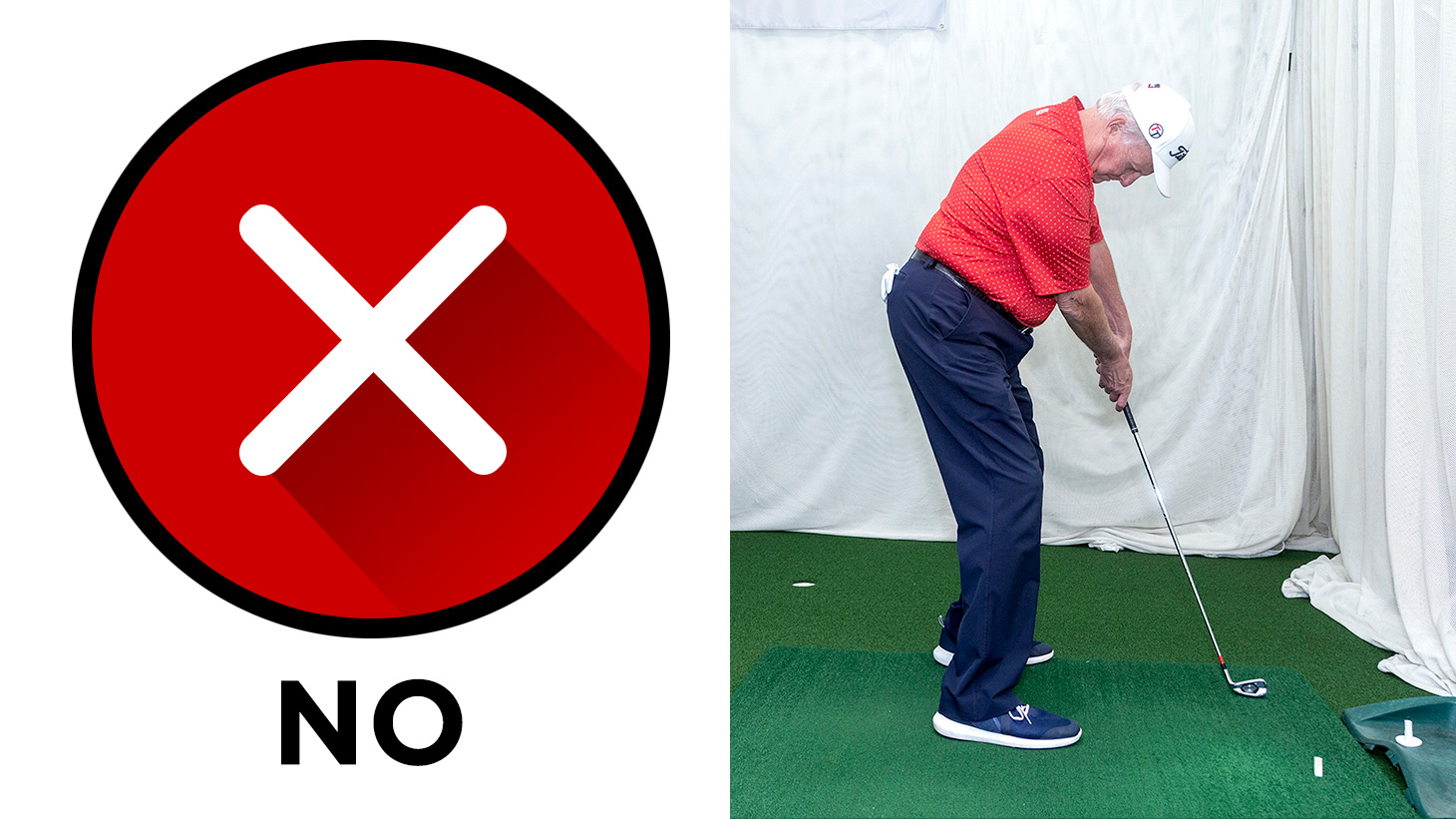 Poor players get to the ball from their knees, back, and neck. Good players get to the ball from the hips. Rather than slouch to get to the ball, try this other sports analogy: pretend you’re skiing, at the top of a run. Stand tall, with your hands on your hips. Let your knees bend slightly, until they feel lively. Bend from the ball joints of your hips to get your chest out over your skis. You’re good to go.2/3
Poor players get to the ball from their knees, back, and neck. Good players get to the ball from the hips. Rather than slouch to get to the ball, try this other sports analogy: pretend you’re skiing, at the top of a run. Stand tall, with your hands on your hips. Let your knees bend slightly, until they feel lively. Bend from the ball joints of your hips to get your chest out over your skis. You’re good to go.2/3
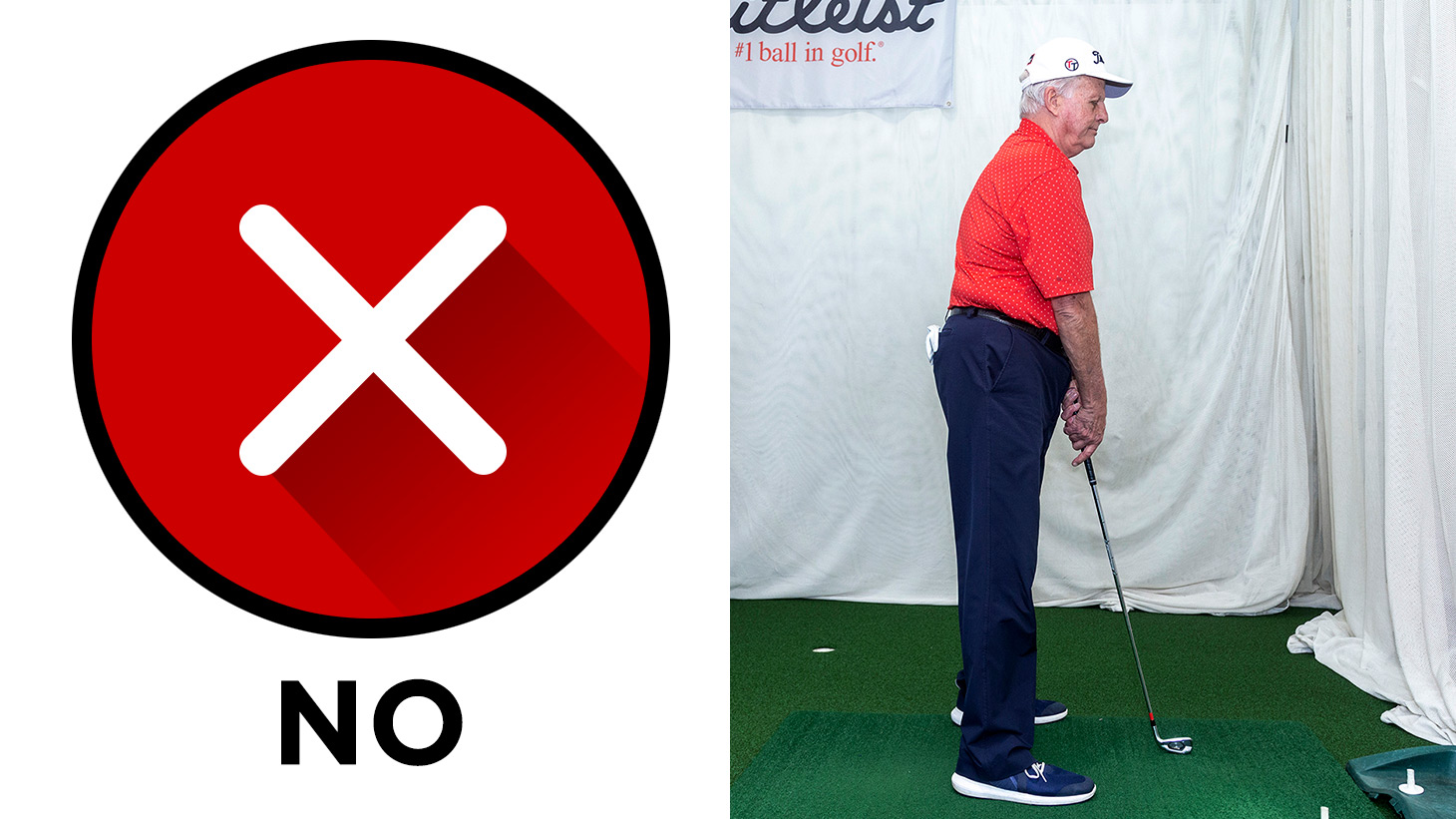 Another common fault I see is posture that’s too upright. When you stand to the ball like this, you aren’t poised to move. You also take a huge source of power out of the equation - the body turn. All you can do from here is hoist the club up with the arms and drop it on the ball. Not very powerful or repeatable.3/3
Another common fault I see is posture that’s too upright. When you stand to the ball like this, you aren’t poised to move. You also take a huge source of power out of the equation - the body turn. All you can do from here is hoist the club up with the arms and drop it on the ball. Not very powerful or repeatable.3/3
"Good golf posture is athletic posture, so be an athlete. When you address the ball, feel poised to move like a defensive back in football, an infielder in baseball or a tennis player returning serve. The ready positions you get in in those sports are very, similar to the way you should stand to the golf ball." - Skip
• • •
Golf Alignment Fundamentals
/teamtitleist/cfs-file/__key/telligent-evolution-components-attachments/13-1143-00-00-00-12-23-79/001-Skip-Guss-Alignment-Do---Good-Alignment-1460x821.jpg/teamtitleist/cfs-file/__key/telligent-evolution-components-attachments/13-1143-00-00-00-12-23-78/002-Skip-Guss-Alignment-Do---Eye-Line-Parallel-1460x821.jpg/teamtitleist/cfs-file/__key/telligent-evolution-components-attachments/13-1143-00-00-00-12-23-77/003-Skip-Guss-Alignment-Dont---Closed-Alignment-1460x821.jpg/teamtitleist/cfs-file/__key/telligent-evolution-components-attachments/13-1143-00-00-00-12-23-76/004-Skip-Guss-Alignment-Dont---Open-Alignment-1460x821.jpg
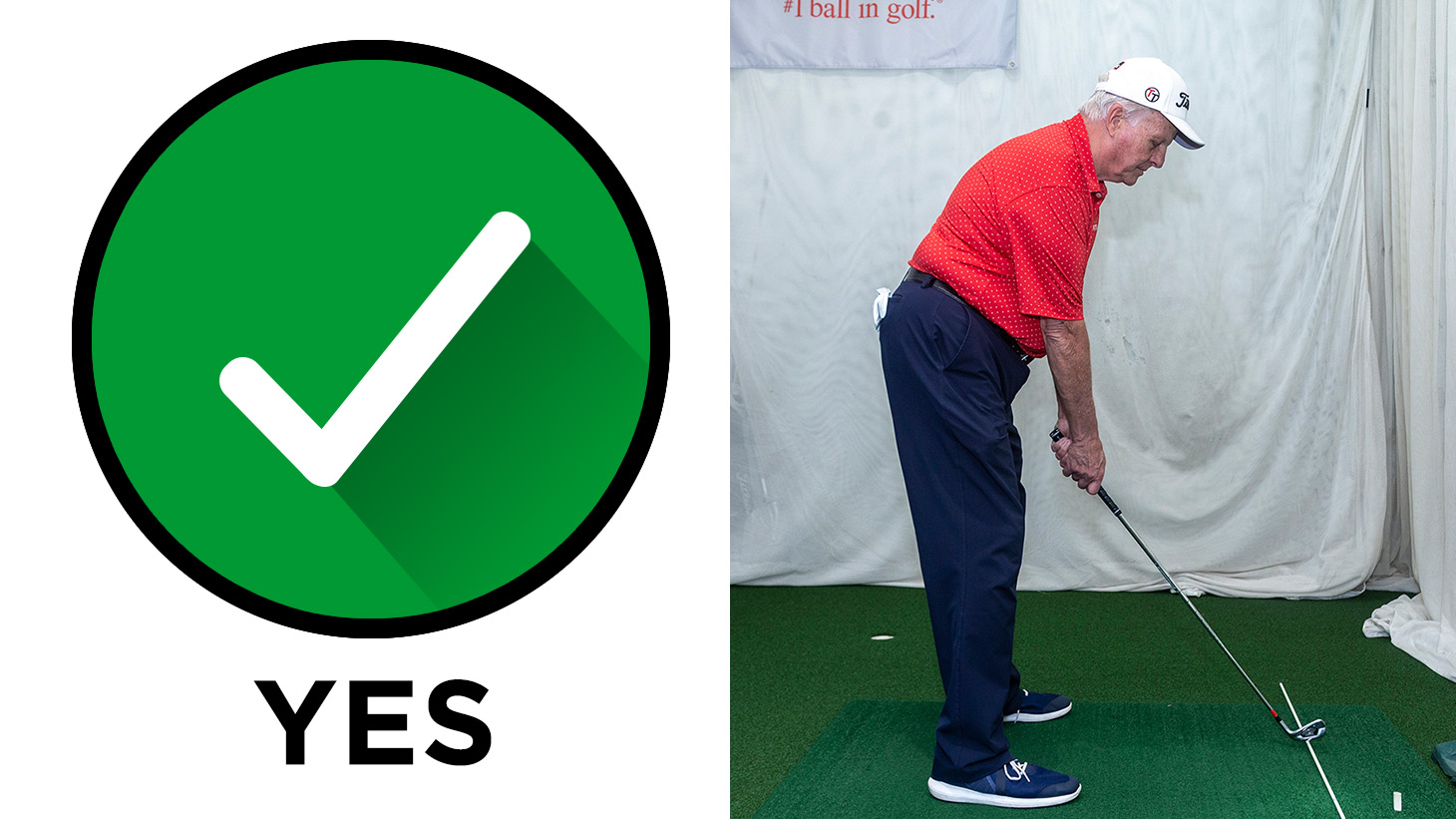 When you have proper alignment your eyes, shoulders, forearms, hips, knees, and feet are all parallel to the target line. Most people get aligned from the bottom up, starting with their feet. I think it’s far better to get aligned from the top down. If your eyes are crooked, everything else gets out of whack, so learn to get your eyes parallel first and build around that.1/4
When you have proper alignment your eyes, shoulders, forearms, hips, knees, and feet are all parallel to the target line. Most people get aligned from the bottom up, starting with their feet. I think it’s far better to get aligned from the top down. If your eyes are crooked, everything else gets out of whack, so learn to get your eyes parallel first and build around that.1/4
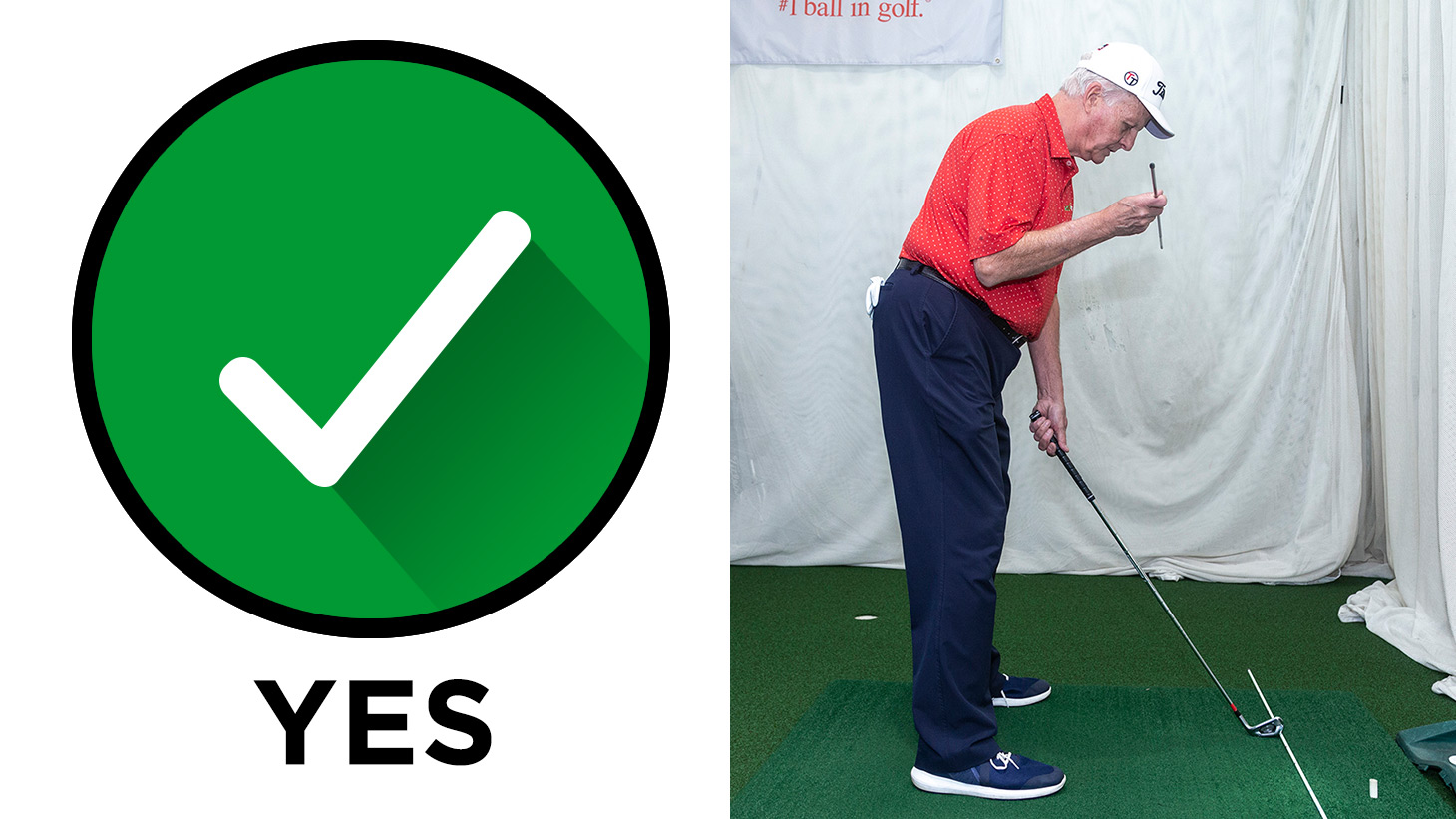 There’s an old expression in skiing that also applies to golf. ‘You'll always go where your eyes are pointed’. In golf you also have the added difficulty of standing to the side of the ball and looking sideways out at your target. To practice good eye alignment, get into your golf posture and hold an alignment rod about chest high, parallel to your target line. Because it’s closer, this line is an easier reference for your eyes to square up to than your target line.2/4
There’s an old expression in skiing that also applies to golf. ‘You'll always go where your eyes are pointed’. In golf you also have the added difficulty of standing to the side of the ball and looking sideways out at your target. To practice good eye alignment, get into your golf posture and hold an alignment rod about chest high, parallel to your target line. Because it’s closer, this line is an easier reference for your eyes to square up to than your target line.2/4
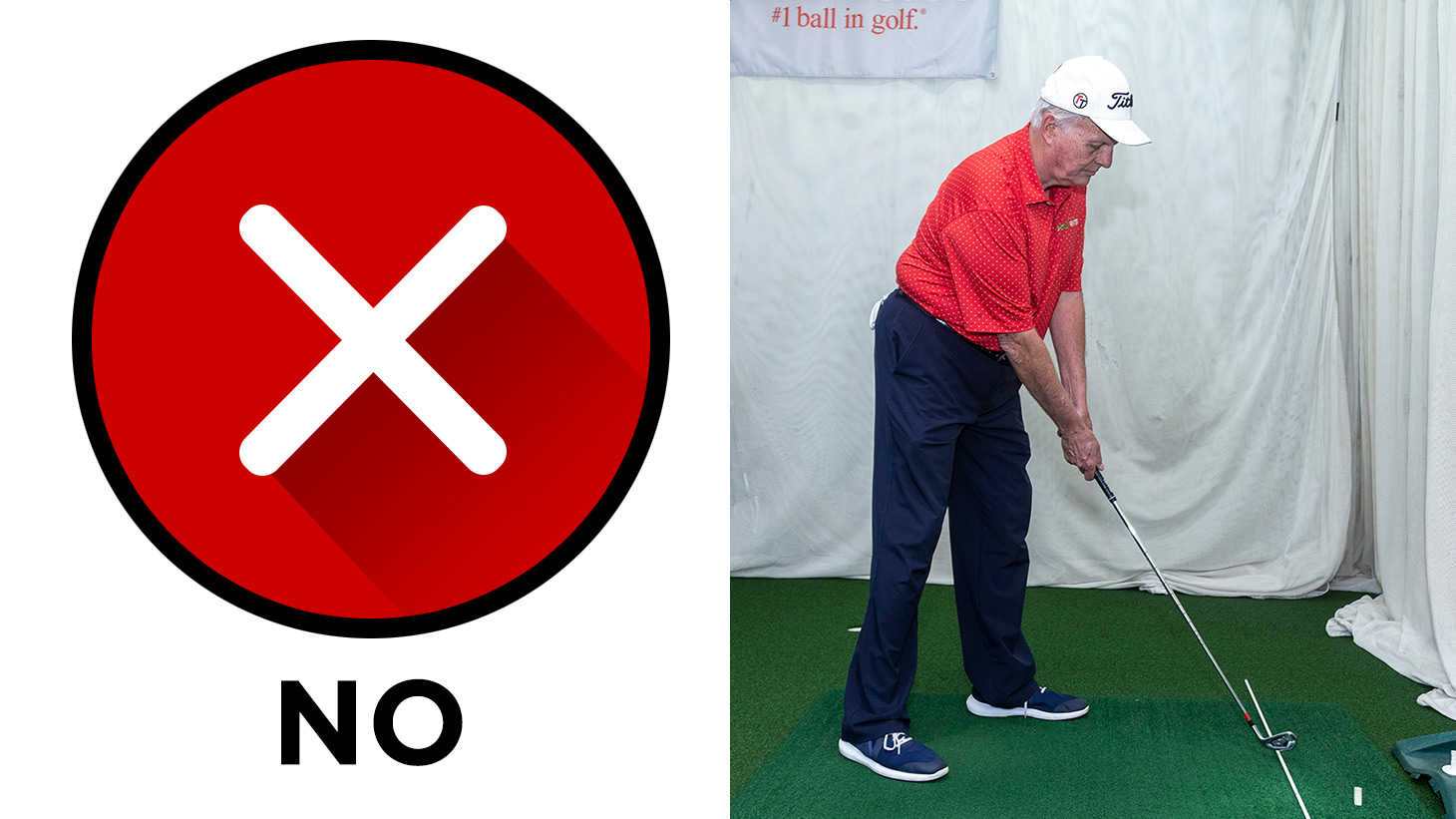 We naturally want to view the world standing upright, our eyes level with the horizon. That’s how our binocular vision works best. When we lose that natural orientation by standing sideways, we can make a lot of subconscious adjustments to get back inside our comfort zone. Unfortunately, we frequently tilt our heads to do this and our eye line goes with it. Depending on which eye is our dominant eye, we can start aligning way right (closed for a right-handed golfer)…3/4
We naturally want to view the world standing upright, our eyes level with the horizon. That’s how our binocular vision works best. When we lose that natural orientation by standing sideways, we can make a lot of subconscious adjustments to get back inside our comfort zone. Unfortunately, we frequently tilt our heads to do this and our eye line goes with it. Depending on which eye is our dominant eye, we can start aligning way right (closed for a right-handed golfer)…3/4
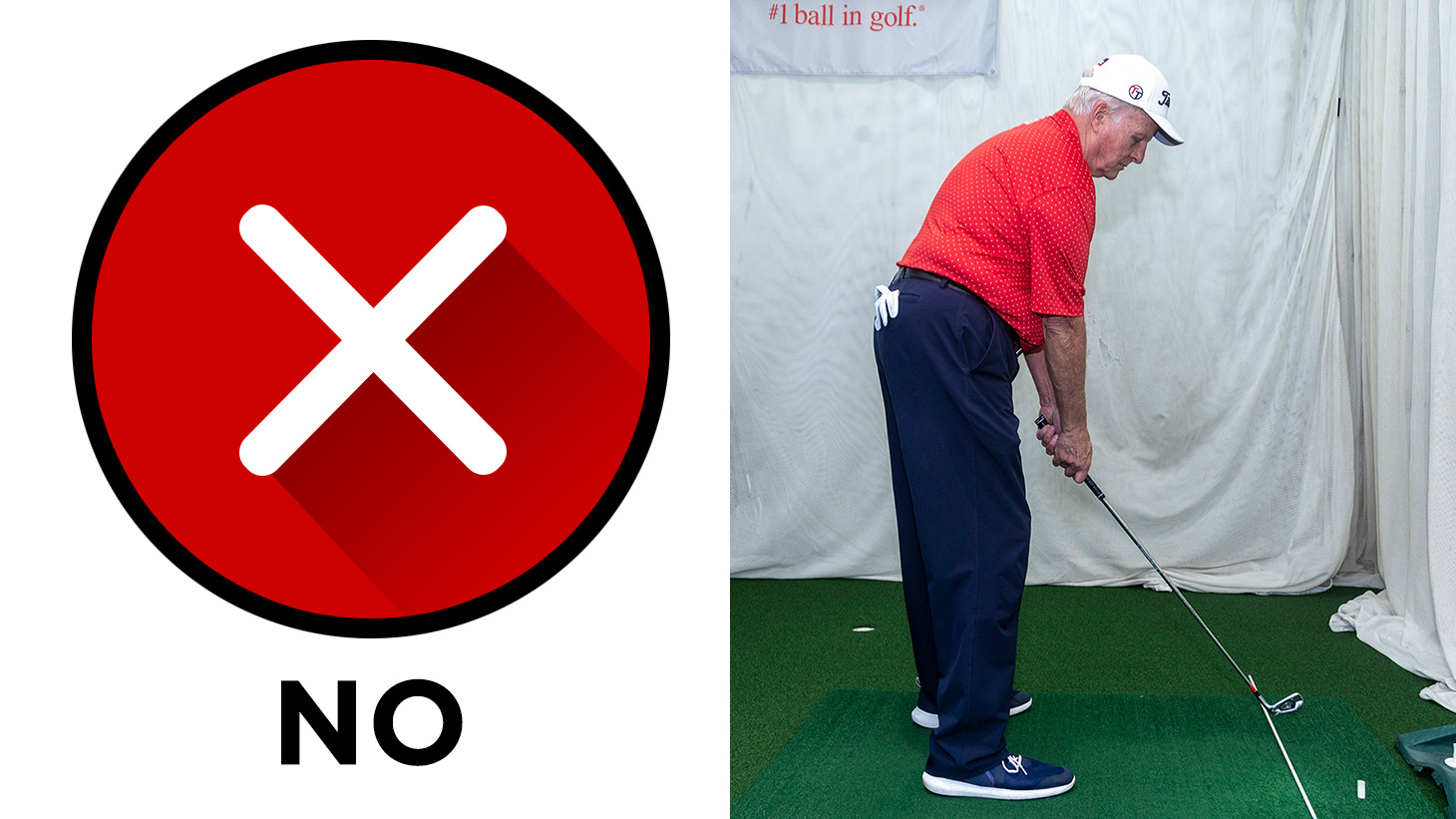 …or way open (left for a right0handed golfer). Your best bet is to establish a good target line and trust it. Practice getting your eyes square to your target line and let your shoulders, forearms, hips, knees and feet follow. Remember, when your eyes are parallel to the target line, you're more apt to swing the golf club along the target line.4/4
…or way open (left for a right0handed golfer). Your best bet is to establish a good target line and trust it. Practice getting your eyes square to your target line and let your shoulders, forearms, hips, knees and feet follow. Remember, when your eyes are parallel to the target line, you're more apt to swing the golf club along the target line.4/4
"Alignment is a railroad track. There are two parallel lines. The outside rail is the target line. The inside rail, which is parallel to the outside rail, is the body line. Aligning your body parallel to the target line is neutral. It gives you the best chance to start the ball on target." - Skip
• • •
Pre-Shot Routine Fundamentals
/teamtitleist/cfs-file/__key/telligent-evolution-components-attachments/13-1144-00-00-00-12-23-75/001-Skip-Guss-Routine-Do---Intermediate-Target-1460x821.jpg/teamtitleist/cfs-file/__key/telligent-evolution-components-attachments/13-1144-00-00-00-12-23-74/002-Skip-Guss-Routine-Do---Approach-Ball-in-Rhythm-1460x821.jpg/teamtitleist/cfs-file/__key/telligent-evolution-components-attachments/13-1144-00-00-00-12-23-73/003-Skip-Guss-Routine-Do---Aim-Clubface-1460x821.jpg/teamtitleist/cfs-file/__key/telligent-evolution-components-attachments/13-1144-00-00-00-12-23-72/004-Skip-Guss-Routine-Do---Square-Body-Lines-1460x821.jpg/teamtitleist/cfs-file/__key/telligent-evolution-components-attachments/13-1144-00-00-00-12-23-71/005-Skip-Guss-Routine-Do---One-Piece-Takeaway-1460x821.jpg/teamtitleist/cfs-file/__key/telligent-evolution-components-attachments/13-1144-00-00-00-12-23-70/006-Skip-Guss-Routine-Do---Back-to-Target-1460x821.jpg/teamtitleist/cfs-file/__key/telligent-evolution-components-attachments/13-1144-00-00-00-12-23-69/007-Skip-Guss-Routine-Do---Squat-to-Start-Downswing-1460x821.jpg/teamtitleist/cfs-file/__key/telligent-evolution-components-attachments/13-1144-00-00-00-12-23-68/008-Skip-Guss-Routine-Do---Rotate-through-Impact-1460x821.jpg/teamtitleist/cfs-file/__key/telligent-evolution-components-attachments/13-1144-00-00-00-12-23-67/009-Skip-Guss-Routine-Do---Hands-Rotate-1460x821.jpg/teamtitleist/cfs-file/__key/telligent-evolution-components-attachments/13-1144-00-00-00-12-23-66/010-Skip-Guss-Routine-Do---Full-Finish-1460x821.jpg
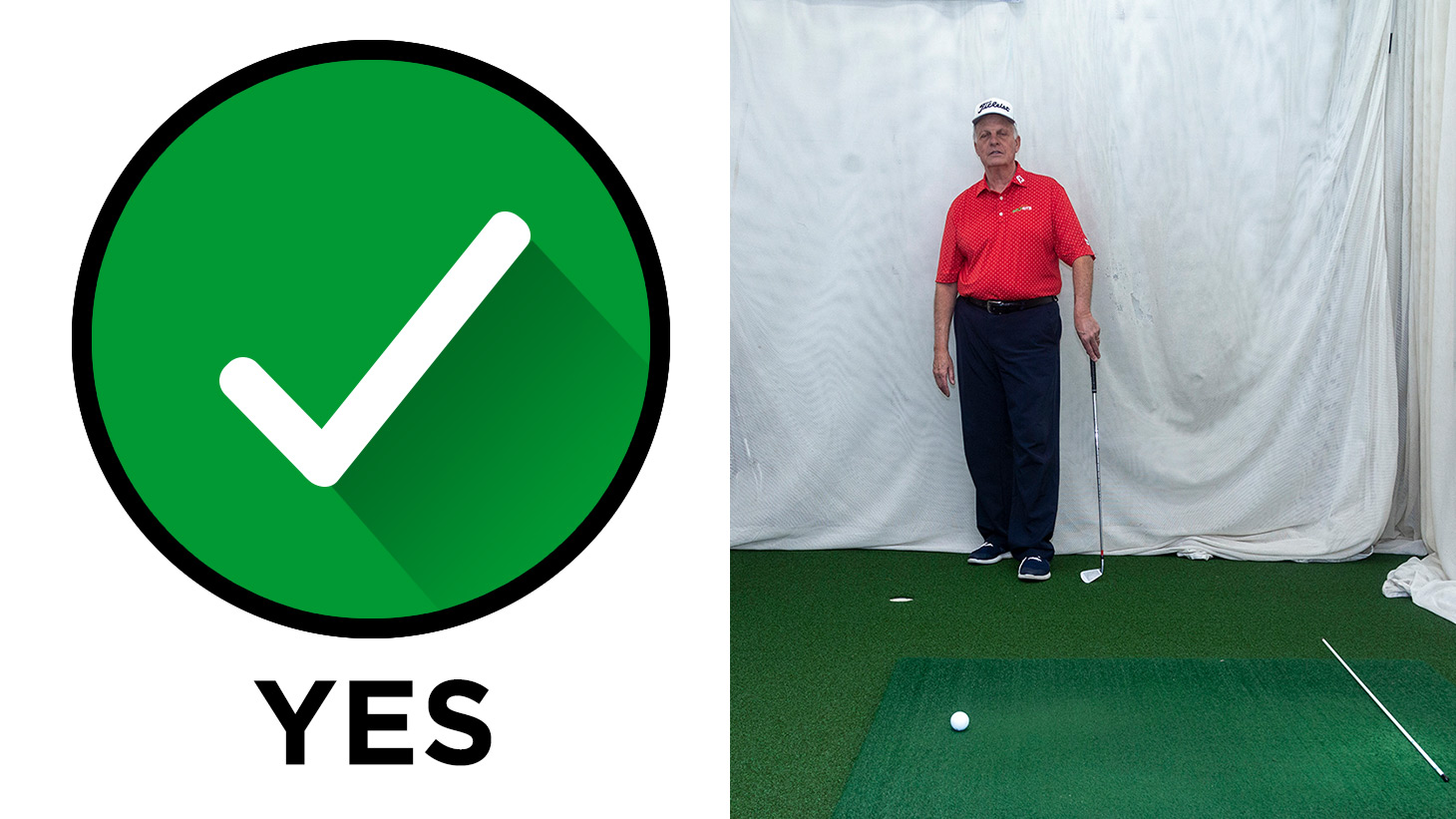 My pre-shot routine starts behind the ball, where I zero in on my target and visualize the shot I'm about to play. I find an intermediate target - something small like a leaf or stick on my target line and I picture a line running from my ball through that object.1/10
My pre-shot routine starts behind the ball, where I zero in on my target and visualize the shot I'm about to play. I find an intermediate target - something small like a leaf or stick on my target line and I picture a line running from my ball through that object.1/10
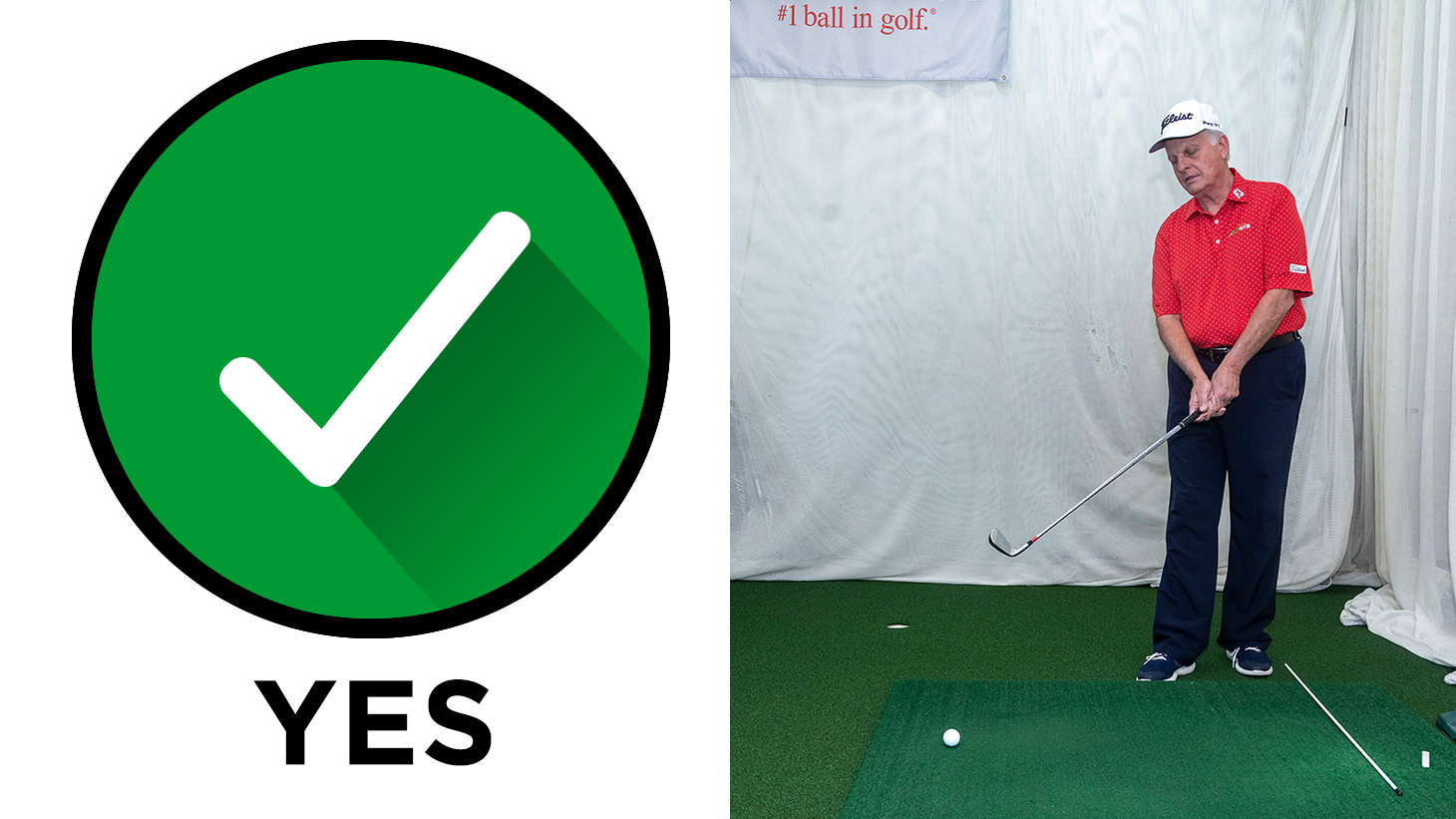 My eyes on the target line, I approach the ball, walking with the same rhythm I'll use in swinging the club.2/10
My eyes on the target line, I approach the ball, walking with the same rhythm I'll use in swinging the club.2/10
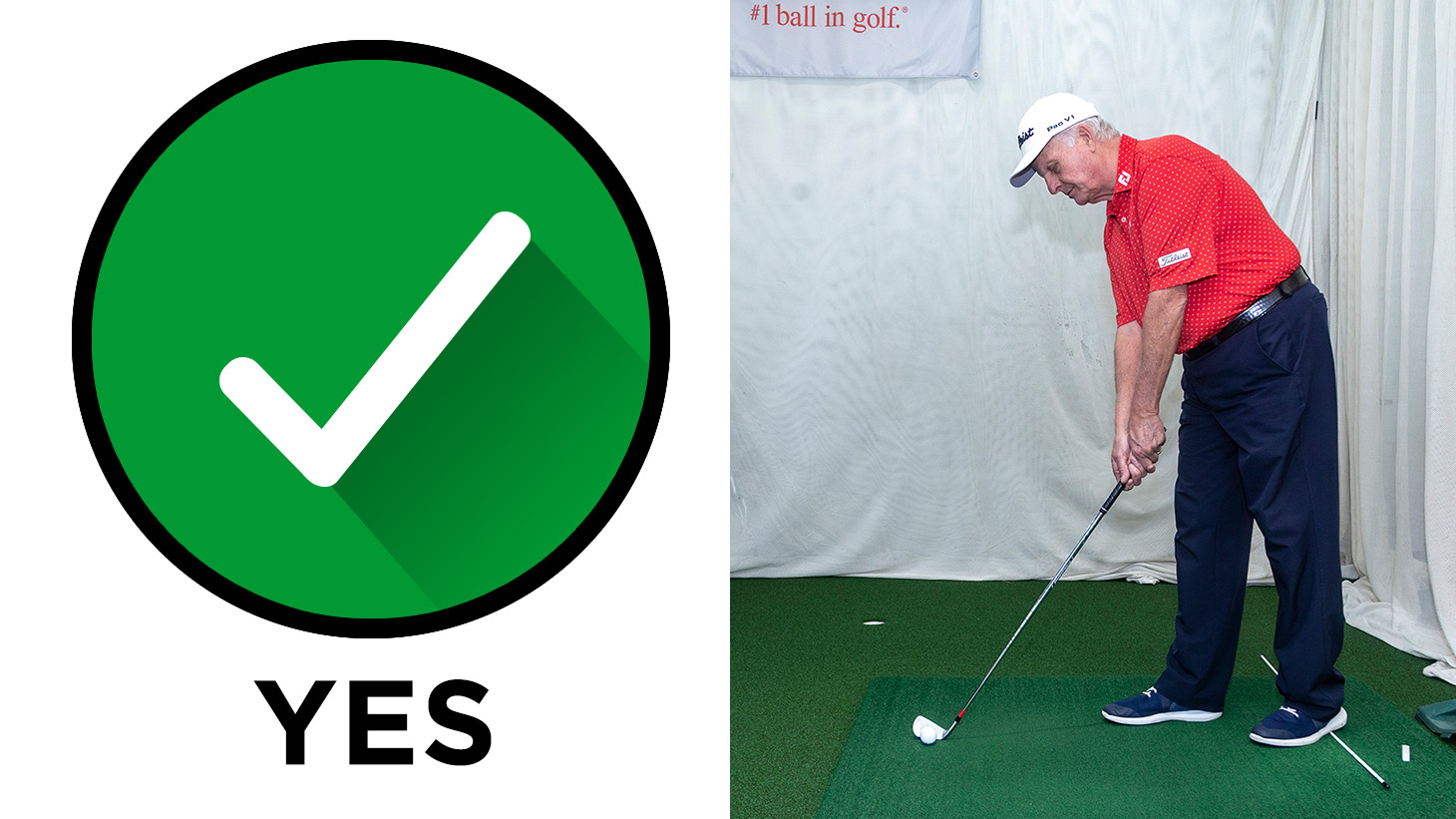 Still picturing my target line, I set the center of my club face directly behind the middle of my golf ball. I align the face of my club square to the line running from my ball through my intermediate target.3/10
Still picturing my target line, I set the center of my club face directly behind the middle of my golf ball. I align the face of my club square to the line running from my ball through my intermediate target.3/10
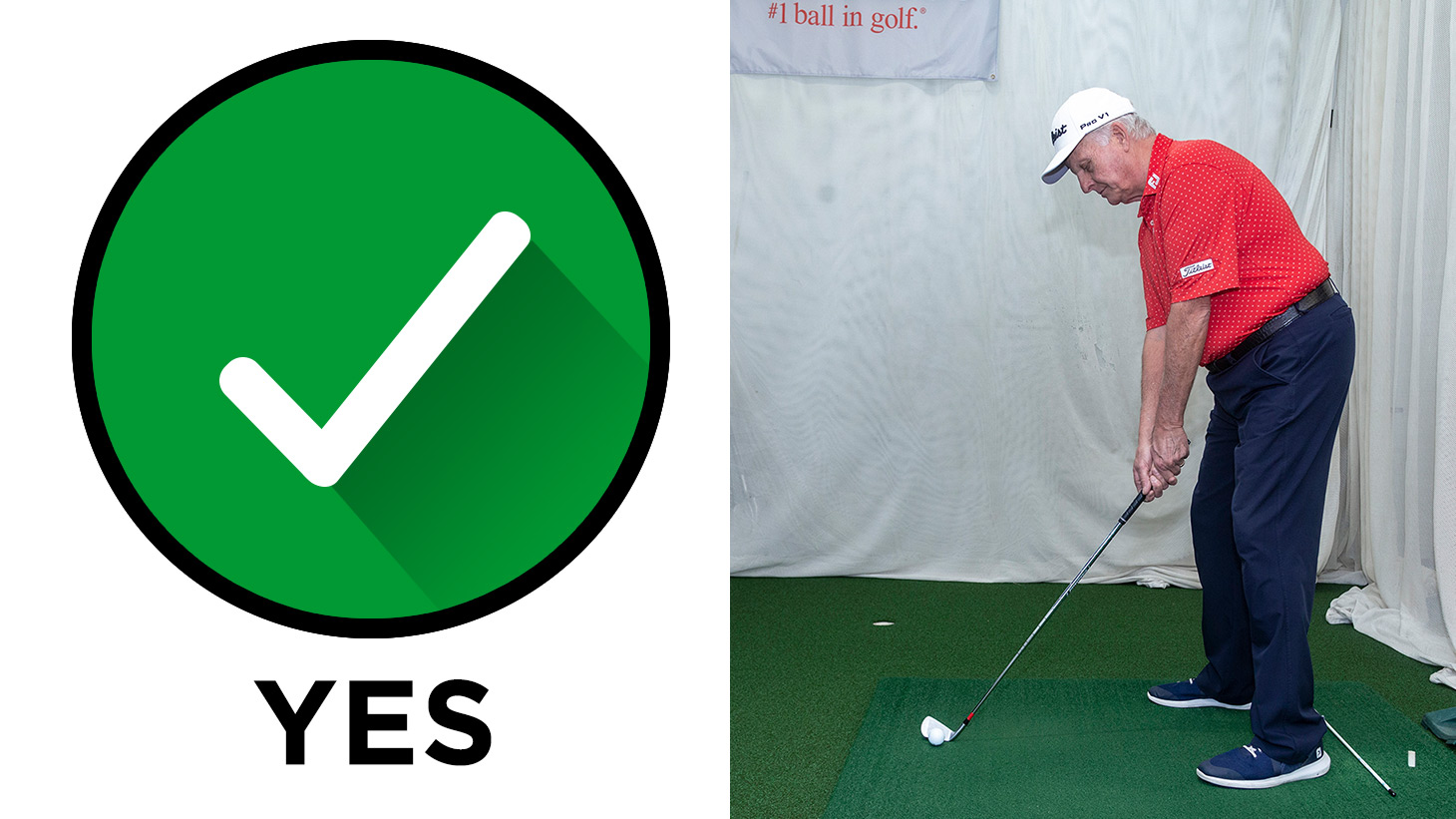 I align my eyes first to the target line and let my shoulders, forearms, hips, knees and feet follow - everything aligned parallel to the target line.4/10
I align my eyes first to the target line and let my shoulders, forearms, hips, knees and feet follow - everything aligned parallel to the target line.4/10
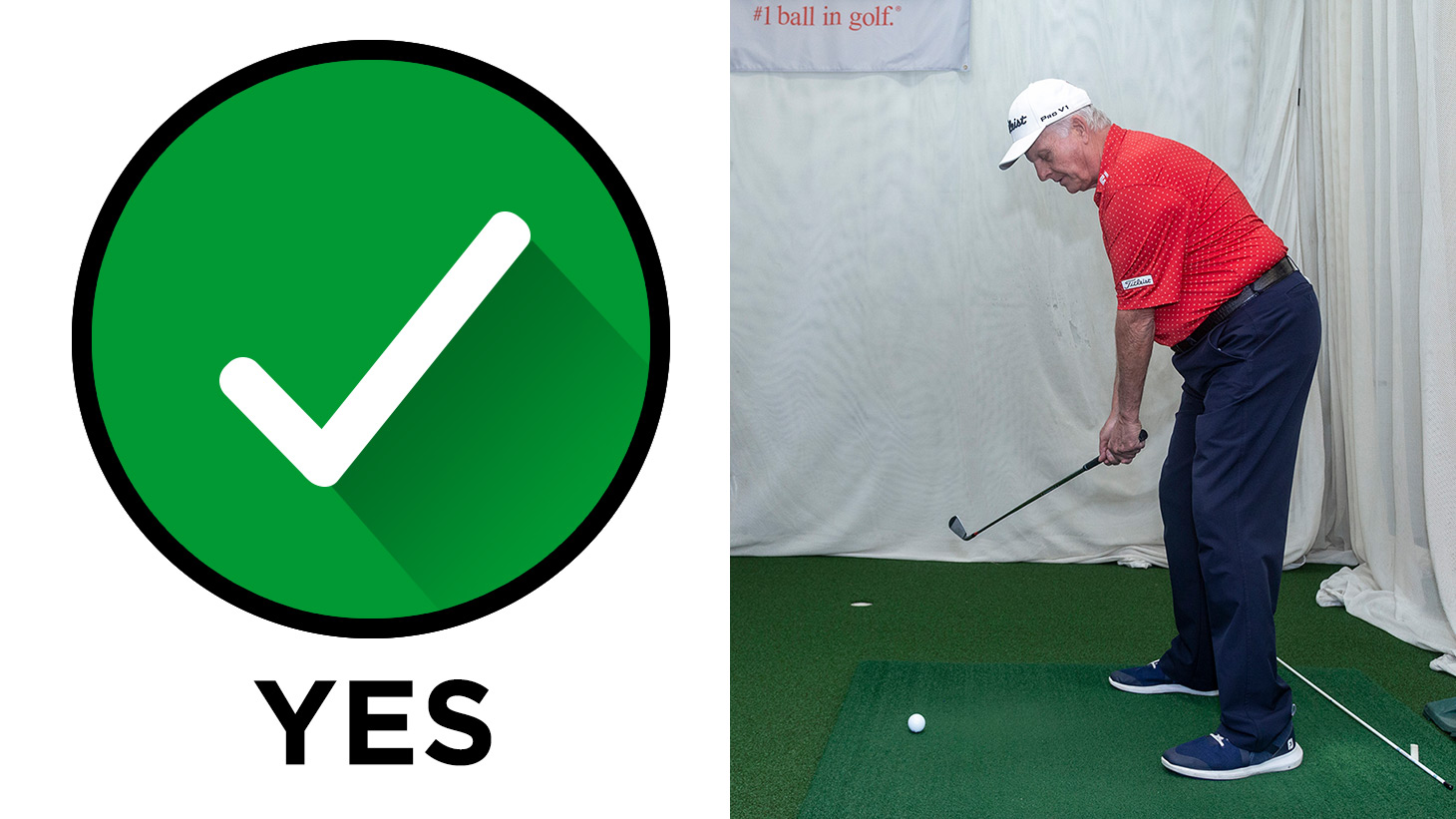 After waggling the club to preview the rhythm of the swing, I take one last glance at the target and then move the club away by gently shifting pressure into my right (trail) foot as I turn my chest away from the target.5/10
After waggling the club to preview the rhythm of the swing, I take one last glance at the target and then move the club away by gently shifting pressure into my right (trail) foot as I turn my chest away from the target.5/10
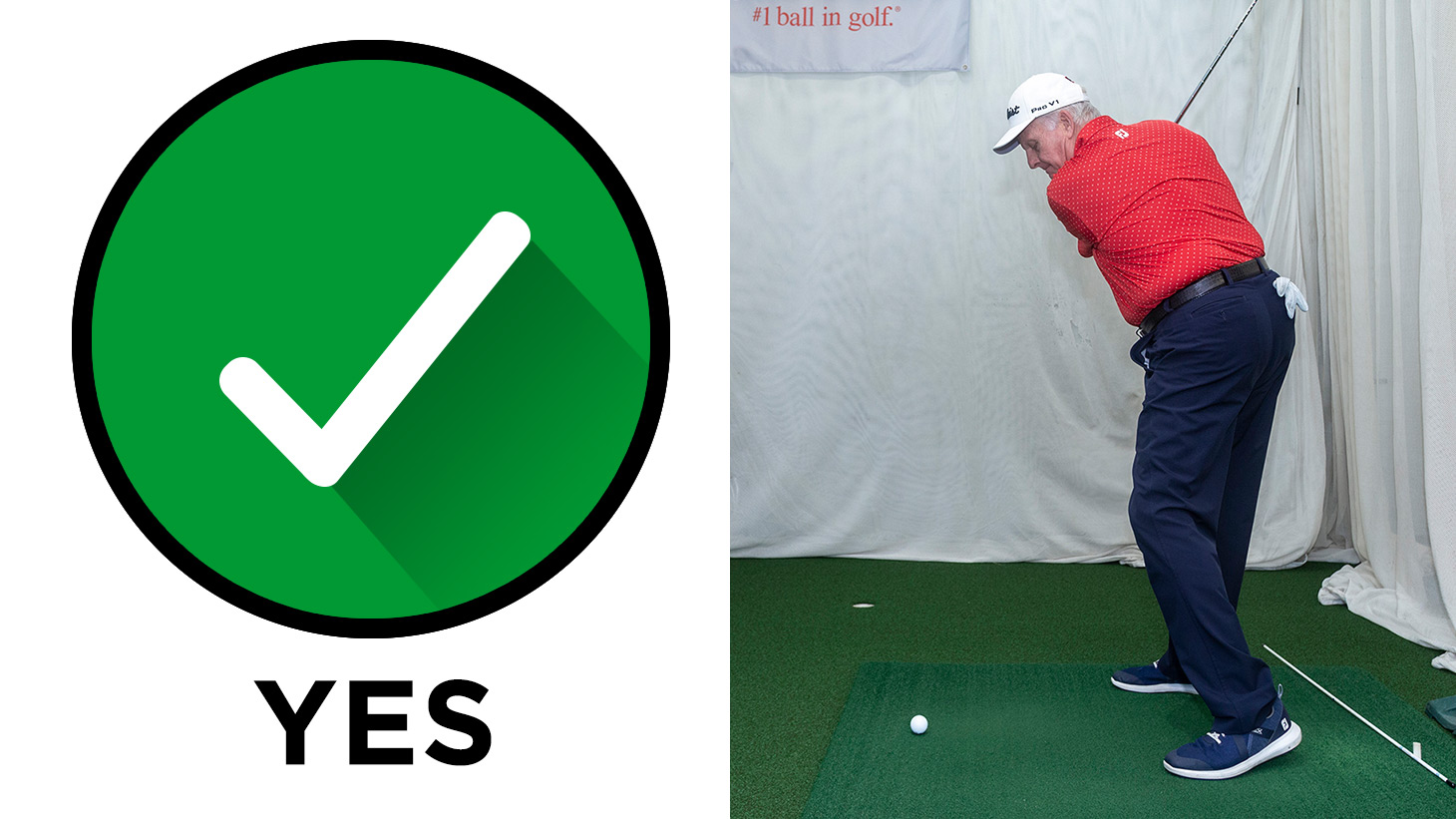 My backswing is complete when I feel fully coiled in my core.6/10
My backswing is complete when I feel fully coiled in my core.6/10
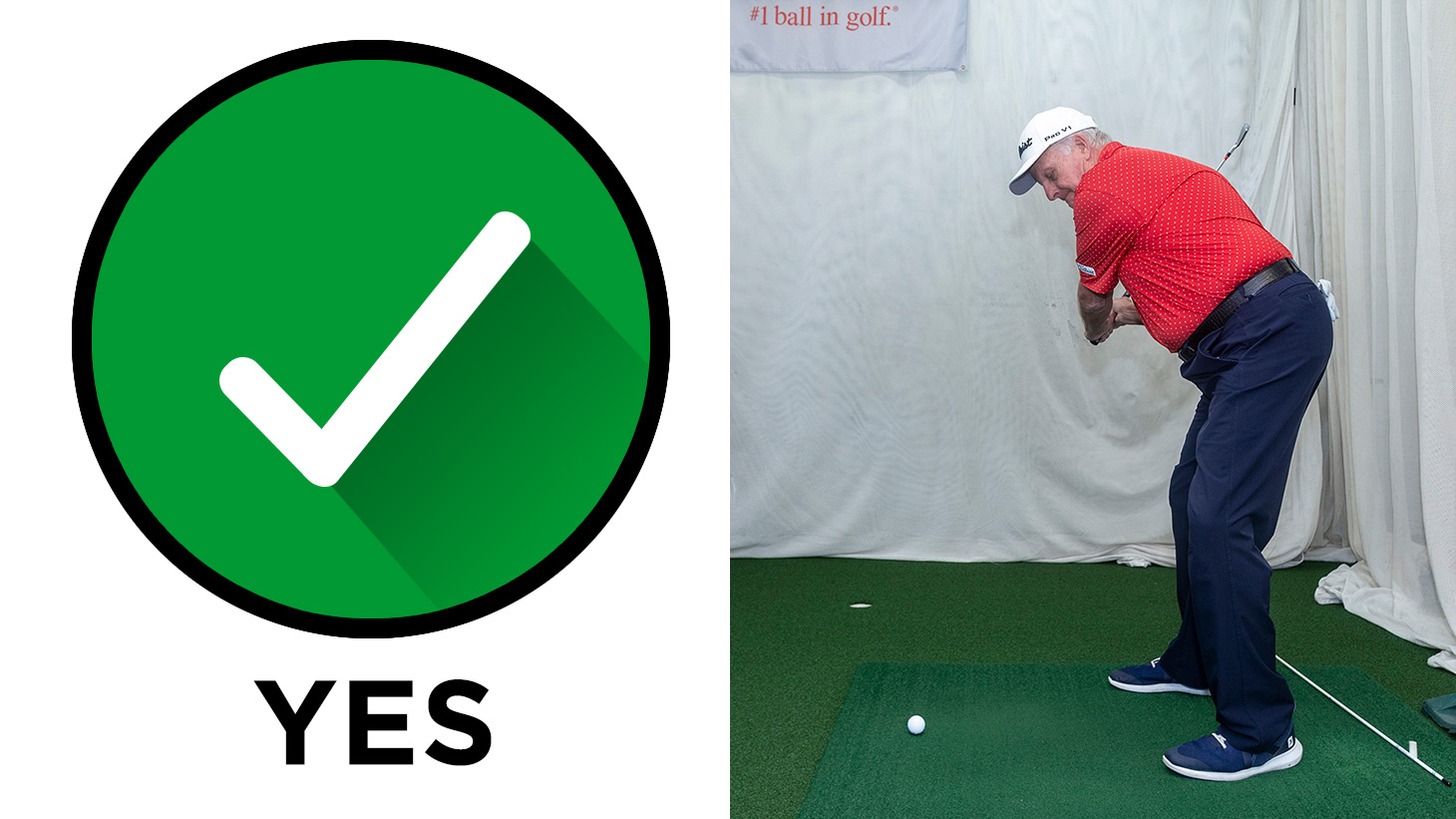 I start the downswing by shifting to the left and squatting down slightly. Starting with the lower body like this ensures that the swing will be sequenced properly, creating a chain of accelerating stages that will deliver effortless power to the ball.7/10
I start the downswing by shifting to the left and squatting down slightly. Starting with the lower body like this ensures that the swing will be sequenced properly, creating a chain of accelerating stages that will deliver effortless power to the ball.7/10
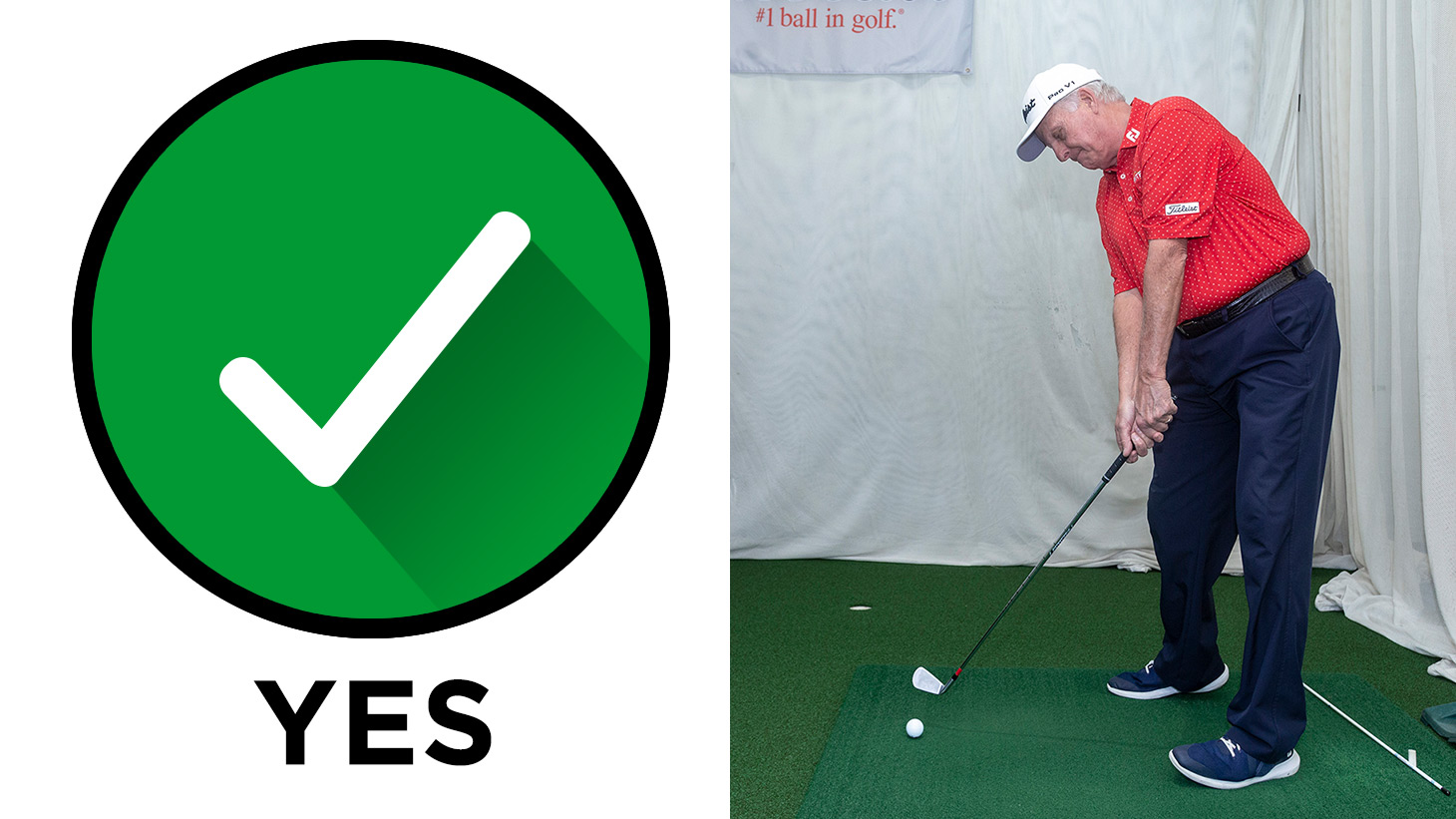 I continue to rotate as I deliver the club to the ball. My hands are ahead of the clubhead and the shaft is leaning forward, a key to compressing the ball. I'm pushing hard off the ground with my left (lead) leg as I rotate, using the ground for leverage.8/10
I continue to rotate as I deliver the club to the ball. My hands are ahead of the clubhead and the shaft is leaning forward, a key to compressing the ball. I'm pushing hard off the ground with my left (lead) leg as I rotate, using the ground for leverage.8/10
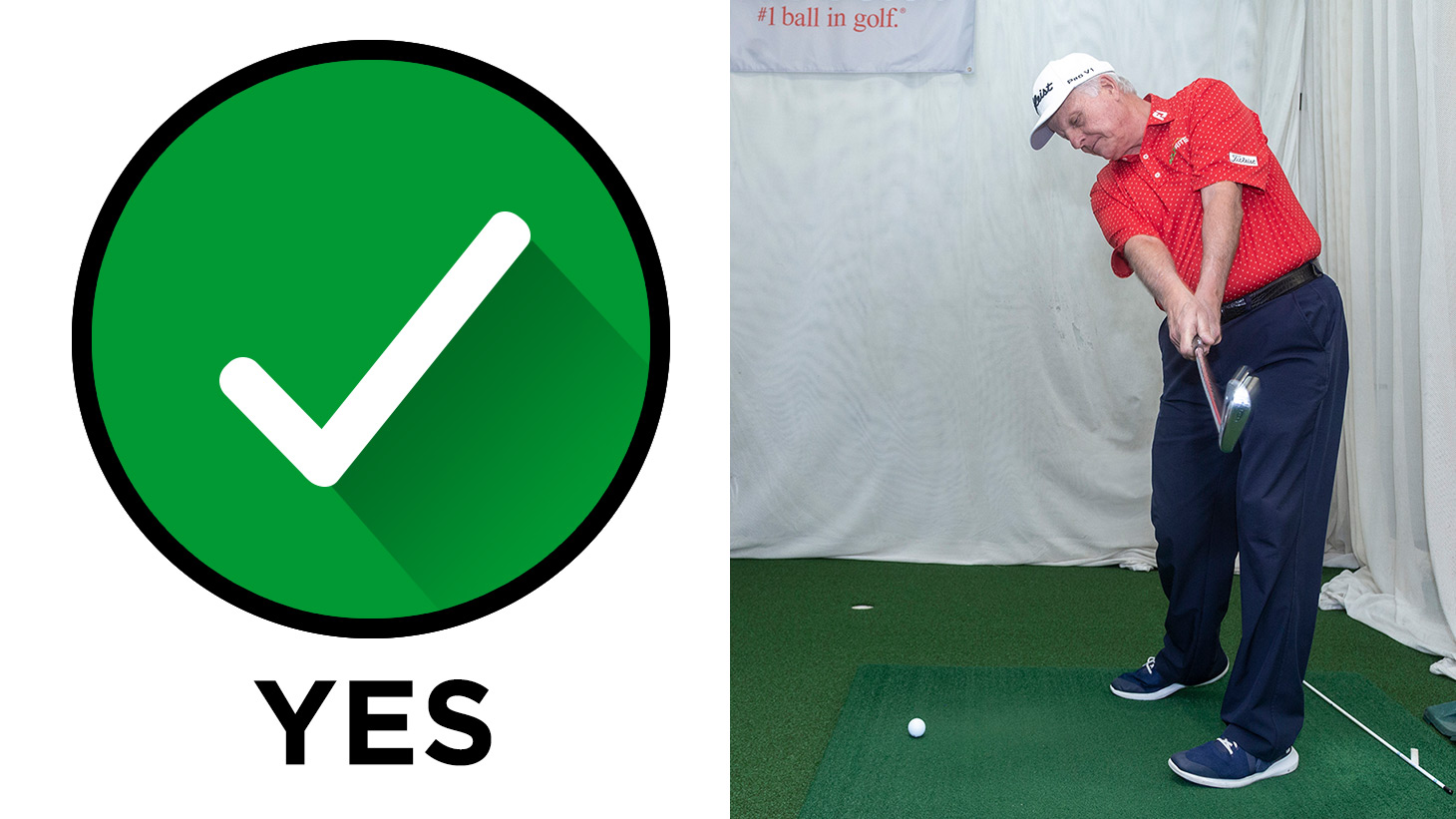 The release. I feel like I'm letting the clubhead go, that it's flying through the ball on its own. The toe of the club naturally rotates - I'm not flipping my hands. The momentum of the club is pulling me, extending both my arms out straight... 9/10
The release. I feel like I'm letting the clubhead go, that it's flying through the ball on its own. The toe of the club naturally rotates - I'm not flipping my hands. The momentum of the club is pulling me, extending both my arms out straight... 9/10
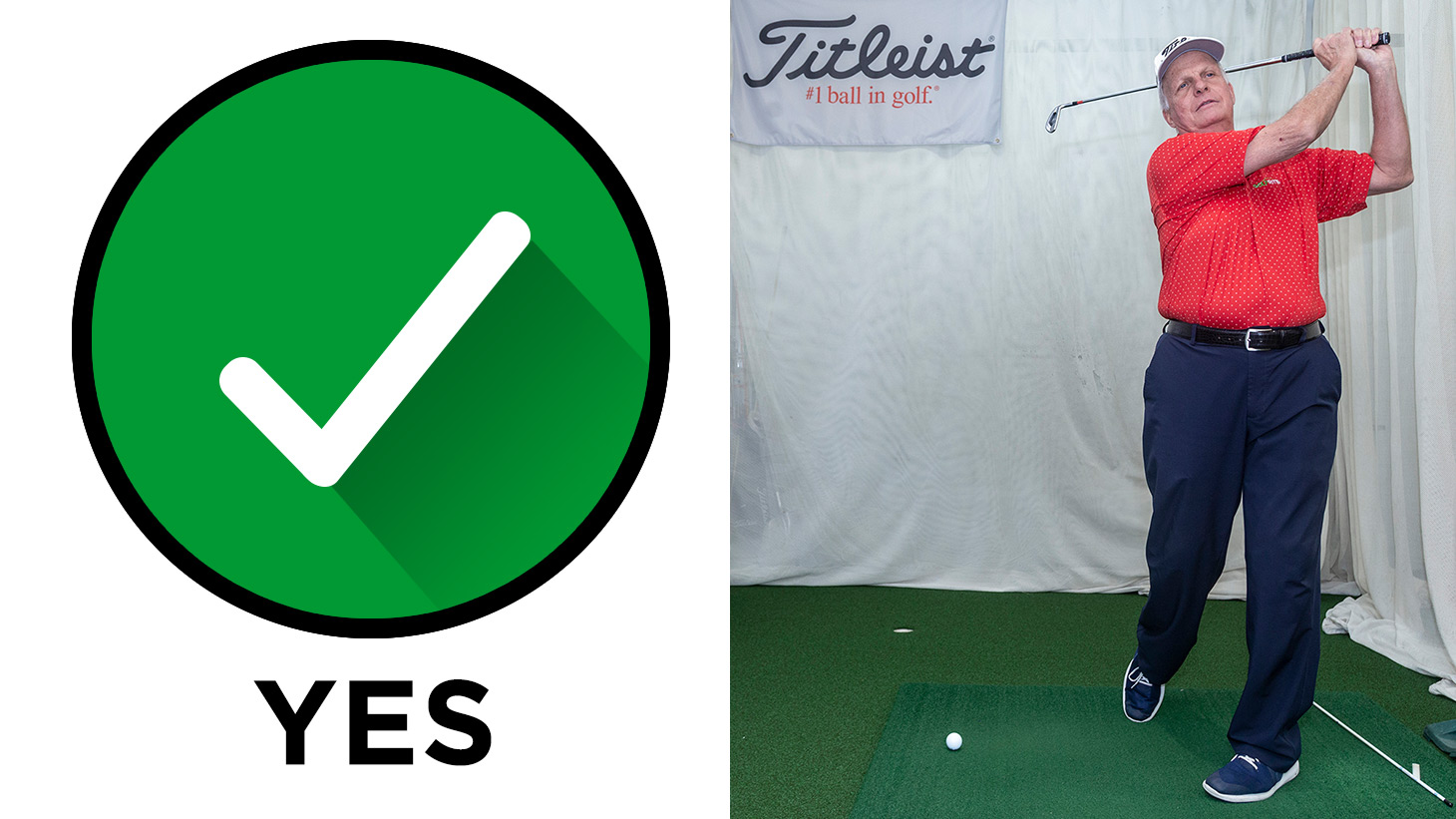 …and lifting me up to a full finish, facing the target.10/10
…and lifting me up to a full finish, facing the target.10/10
"A well crafted pre-shot routine allows you to apply your good fundamentals in a fluid, dynamic way. It frees you up so you're not thinking about the fundamentals at all. You're focused exclusively on the target and the shot you're about to play. A great analogy for how your pre-shot routine should feel is dancing. If you're at a wedding and you ask your wife to dance, you don't march her out like a robot, freeze in place, and then wait for the next song to play. You're already feeling the music and getting into rhythm as you make your way to the dance floor. Feel the rhythm of your shot and as you grip the club, pick out your target, align your clubface, settle into your stance and pull the trigger - do it all in that rhythm." - Skip
Team Titleist
* Definition courtesy of dictionary.com